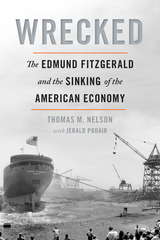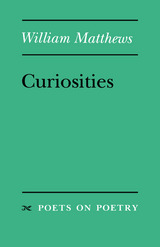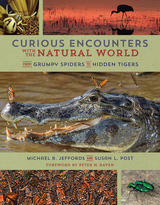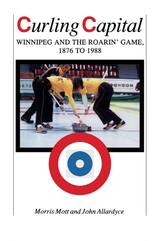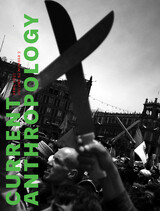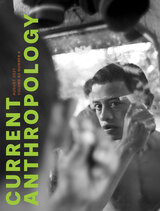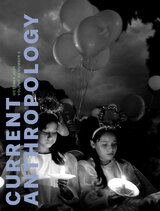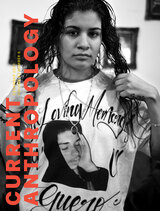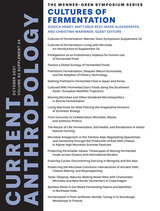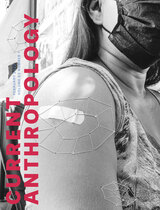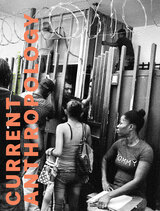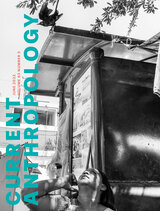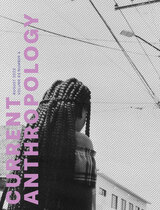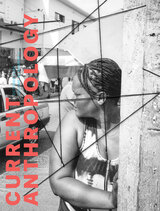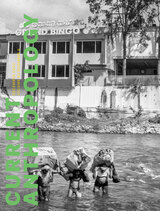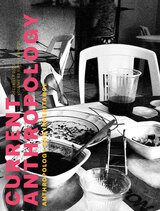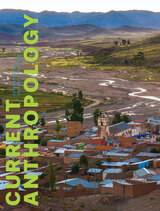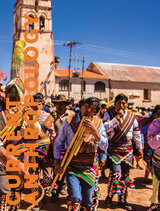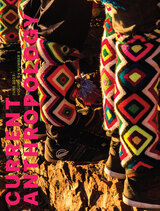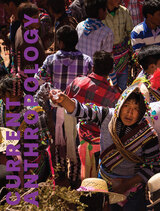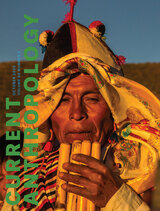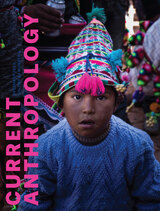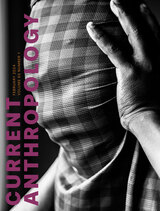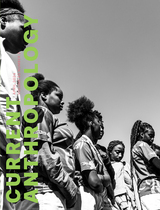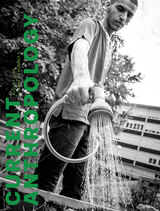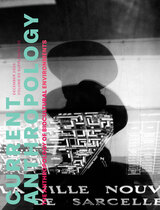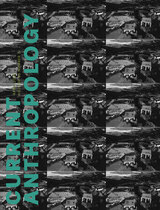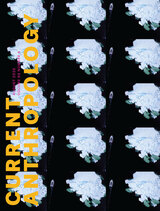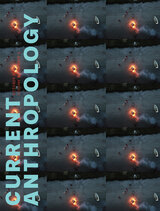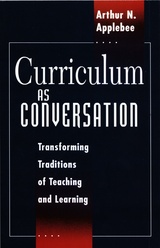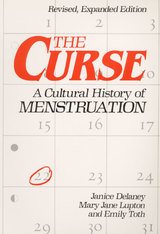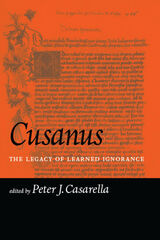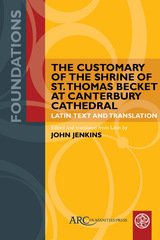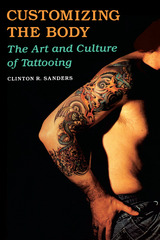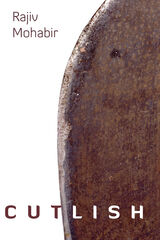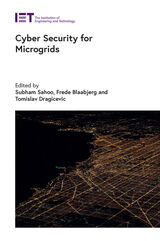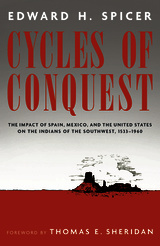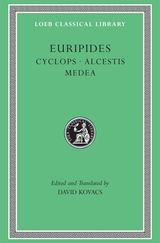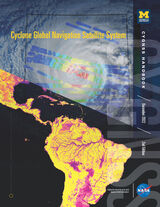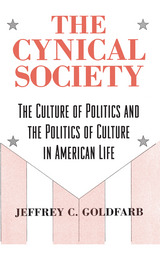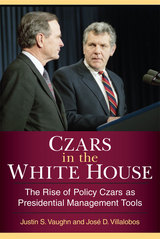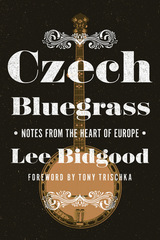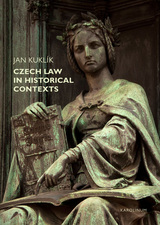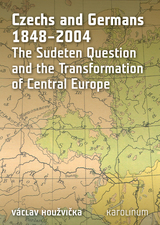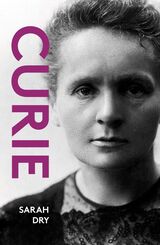 Curie
Sarah Dry
Haus Publishing, 2025 A striking biography of Marie Curie, the first woman to win a Nobel Prize and the only person ever to win Nobel Prizes in two disciplines.
Marie Curie is most famous for her pioneering work in the field of radioactivity and for discovering two new elements, polonium and radium. Curie not only broke scientific barriers but defied the gender expectations of her time amidst a male-dominated scientific community.
This revised edition of Curie, with a new introduction from the author, debunks myths about Curie, rejecting the notion of her as cold and reserved and recasting her as the dynamic and lively woman she truly was. Sarah Dry illuminates Curie’s personal and professional struggles: the demands of motherhood, the public scrutiny she faced, the grief she suffered after the loss of her husband, and her exposure to radiation. Ultimately, Curie emerges as an astonishingly resilient figure whose contributions to science and courage during adversity make her an enduring example, and a woman whose powerful legacy continues to inspire today.
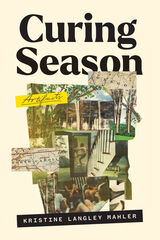 Curing Season: Artifacts
Kristine Langley Mahler
West Virginia University Press, 2022 “An exquisite, aching memoir of adolescent girlhood. . . . Treasures await.” —Minneapolis Star Tribune
“A lovely and rapturous excavation and examination of the past, a lesson in writing oneself into history when it doesn’t offer you a space.” —Jenny Boully, author of Betwixt-and-Between: Essays on the Writing Life
After spending four years of adolescence in suburban North Carolina, Kristine Langley Mahler, even as an adult, is still buffeted by the cultural differences between her pioneer-like upbringing in Oregon and the settled southern traditions into which she could never assimilate. Collecting evidence of displacement—a graveyard in a mall parking lot, a suburban neighborhood of white kids bused to desegregate public schools in the 1990s, and the death of her best friend—Curing Season is an attempt to understand her failed grasp at belonging.
Mahler’s yearning for acceptance remains buried like a splinter, which she carefully tweezes out in the form of artifacts from her youth. But it isn’t until she encounters a book of local family histories that she takes inhabitation and truth apart, grafting and twisting and imprinting her history on theirs, until even she can no longer tell the difference between their truth and her own. Using inventive essay forms, Mahler pries apart the cracks of exclusion and experiments with the nature of belonging, memory, and place. Curing Season is a coming-of-age memoir for anyone who grew up anywhere but home.
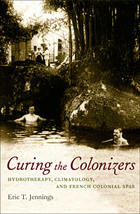 Curing the Colonizers: Hydrotherapy, Climatology, and French Colonial Spas
Eric T. Jennings
Duke University Press, 2006 “Beware! Against the poison that is Africa, there is but one antidote: Vichy.” So ran a 1924 advertisement for one of France’s main spas. Throughout the French empire, spas featuring water cures, often combined with “climatic” cures, thrived during the nineteenth century and the twentieth. Water cures and high-altitude resorts were widely believed to serve vital therapeutic and even prophylactic functions against tropical disease and the tropics themselves. The Ministry of the Colonies published bulletins accrediting a host of spas thought to be effective against tropical ailments ranging from malaria to yellow fever; specialized guidebooks dispensed advice on the best spas for “colonial ills.” Administrators were granted regular furloughs to “take the waters” back home in France. In the colonies, spas assuaged homesickness by creating oases of France abroad. Colonizers frequented spas to maintain their strength, preserve their French identity, and cultivate their difference from the colonized. Combining the histories of empire, leisure, tourism, culture, and medicine, Eric T. Jennings sheds new light on the workings of empire by examining the rationale and practice of French colonial hydrotherapy between 1830 and 1962. He traces colonial acclimatization theory and the development of a “science” of hydrotherapy appropriate to colonial spaces, and he chronicles and compares the histories of spas in several French colonies—Guadeloupe, Madagascar, Tunisia, and Réunion—and in France itself. Throughout Curing the Colonizers, Jennings illuminates the relationship between indigenous and French colonial therapeutic knowledge as well as the ultimate failure of the spas to make colonialism physically or morally safe for the French.
Curiosities
William Matthews
University of Michigan Press, 1989 These essays reveal the poet's fascination with the relationship between language and emotional life
Curiosity: A Cultural History of Early Modern Inquiry
Barbara M. Benedict
University of Chicago Press, 2001 "Pithy and wide-ranging. . . . This study provides a fresh new lens through which to reinvestigate the whole of early modern English literature."—Library Journal
In this striking social history, Barbara M. Benedict draws on the texts of the early modern period to discover the era's attitudes toward curiosity, a trait we learn was often depicted as an unsavory form of transgression or cultural ambition.
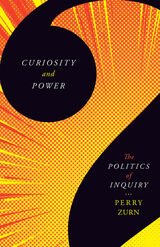 Curiosity and Power: The Politics of Inquiry
Perry Zurn
University of Minnesota Press, 2021 A trailblazing exploration of the political stakes of curiosity
Curiosity is political. Who is curious, when, and how reflects the social values and power structures of a given society. In Curiosity and Power, Perry Zurn explores the political philosophy of curiosity, staking the groundbreaking claim that it is a social force—the heartbeat of political resistance and a critical factor in social justice. He argues that the very scaffolding of curiosity is the product of political architectures, and exploring these values and architectures is crucial if we are to better understand, and more ethically navigate, the struggle over inquiry in an unequal world. Curiosity and Power explores curiosity through the lens of political philosophy—weaving in Nietzsche, Foucault, and Derrida in doing so—and the experience of political marginalization, demonstrating that curiosity is implicated equally in the maintenance of societies and in their transformation. Curiosity plays as central a role in establishing social institutions and fields of inquiry as it does in their deconstruction and in building new forms of political community. Understanding curiosity is critical to understanding politics, and understanding politics is critical to understanding curiosity. Drawing not only on philosophy and political theory but also on feminist theory, race theory, disability studies, and trans studies, Curiosity and Power tracks curiosity in the structures of political marginalization and resistance—from the Civil Rights Movement to building better social relationships. Curiosity and Power insists that the power of curiosity be recognized and engaged responsibly.
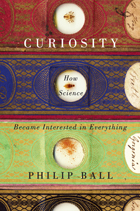 Curiosity: How Science Became Interested in Everything
Philip Ball
University of Chicago Press, 2013 With the recent landing of the Mars rover Curiosity, it seems safe to assume that the idea of being curious is alive and well in modern science—that it’s not merely encouraged but is seen as an essential component of the scientific mission. Yet there was a time when curiosity was condemned. Neither Pandora nor Eve could resist the dangerous allure of unanswered questions, and all knowledge wasn’t equal—for millennia it was believed that there were some things we should not try to know. In the late sixteenth century this attitude began to change dramatically, and in Curiosity: How Science Became Interested in Everything, Philip Ball investigates how curiosity first became sanctioned—when it changed from a vice to a virtue and how it became permissible to ask any and every question about the world. Looking closely at the sixteenth through eighteenth centuries, Ball vividly brings to life the age when modern science began, a time that spans the lives of Galileo and Isaac Newton. In this entertaining and illuminating account of the rise of science as we know it, Ball tells of scientists both legendary and lesser known, from Copernicus and Kepler to Robert Boyle, as well as the inventions and technologies that were inspired by curiosity itself, such as the telescope and the microscope. The so-called Scientific Revolution is often told as a story of great geniuses illuminating the world with flashes of inspiration. But Curiosity reveals a more complex story, in which the liberation—and subsequent taming—of curiosity was linked to magic, religion, literature, travel, trade, and empire. Ball also asks what has become of curiosity today: how it functions in science, how it is spun and packaged for consumption, how well it is being sustained, and how the changing shape of science influences the kinds of questions it may continue to ask. Though proverbial wisdom tell us that it was through curiosity that our innocence was lost, that has not deterred us. Instead, it has been completely the contrary: today we spend vast sums trying to reconstruct the first instants of creation in particle accelerators, out of a pure desire to know. Ball refuses to let us take this desire for granted, and this book is a perfect homage to such an inquisitive attitude.
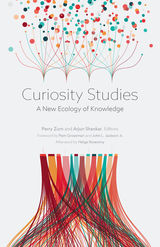 Curiosity Studies: A New Ecology of Knowledge
Perry Zurn
University of Minnesota Press, 2020 The first English-language collection to establish curiosity studies as a unique field
From science and technology to business and education, curiosity is often taken for granted as an unquestioned good. And yet, few people can define curiosity. Curiosity Studies marshals scholars from more than a dozen fields not only to define curiosity but also to grapple with its ethics as well as its role in technological advancement and global citizenship. While intriguing research on curiosity has occurred in numerous disciplines for decades, no rigorously cross-disciplinary study has existed—until now. Curiosity Studies stages an interdisciplinary conversation about what curiosity is and what resources it holds for human and ecological flourishing. These engaging essays are integrated into four clusters: scientific inquiry, educational practice, social relations, and transformative power. By exploring curiosity through the practice of scientific inquiry, the contours of human learning, the stakes of social difference, and the potential of radical imagination, these clusters focus and reinvigorate the study of this universal but slippery phenomenon: the desire to know. Against the assumption that curiosity is neutral, this volume insists that curiosity has a history and a political import and requires precision to define and operationalize. As various fields deepen its analysis, a new ecosystem for knowledge production can flourish, driven by real-world problems and a commitment to solve them in collaboration. By paying particular attention to pedagogy throughout, Curiosity Studies equips us to live critically and creatively in what might be called our new Age of Curiosity. Contributors: Danielle S. Bassett, U of Pennsylvania; Barbara M. Benedict, Trinity College; Susan Engel, Williams College; Ellen K. Feder, American U; Kristina T. Johnson, Massachusetts Institute of Technology; Narendra Keval; Christina León, Princeton U; Tyson Lewis, U of North Texas; Amy Marvin, U of Oregon; Hilary M. Schor, U of Southern California; Seeta Sistla, Hampshire College; Heather Anne Swanson, Aarhus U.
 A Curious and Ingenious Art: Reflections on Daguerreotypes at Harvard
Melissa Banta
University of Iowa Press, 2000
Around the time Louis Jacques Mandé Daguerre perfected his method for fixing images on polished metal plates in 1839, Harvard was emerging as a modern research institution. Accordingly, the college began amassing vast collections for teaching and research. Among these collections in the university's libraries, museums, archives, and academic departments are some of the earliest photographic documents of American life: daguerreotypes.
A Curious and Ingenious Art brings together a representative sampling of Harvard's internationally significant but relatively unknown collection of daguerreotypes. Many of these images were made for, by, and of members of the university's community and have been in its holdings for more than 150 years. The collection includes the work of some of America's pioneering daguerreotypists, such as Mathew Brady, Southworth and Hawes, and John Adams Whipple. Most notably, the Harvard collection preserved for posterity such faces of the era as Oliver Wendell Holmes, Ralph Waldo Emerson, Harriet Beecher Stowe, Henry James, James McNeill Whistler, Dorothea Dix, Jenny Lind, and even Tom Thumb.
The university also seized upon photography as a tool of scientific research, stunningly exemplified in one of the first detailed daguerreotypes of the moon taken in 1851 as well as in images capturing the emergence of modern anesthesia. An unfortunate misuse of photography is recalled in the now famous slave daguerreotypes commissioned by natural historian Louis Agassiz, who believed in the theory of separate human species.
The Harvard collection represents the early history of photography and its social meaning. The accompanying essays explore the personal, telling histories behind the images, stories that unveil the reflections of individuals who searched for purpose and promise in the new medium.
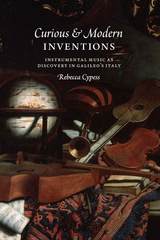 Curious and Modern Inventions: Instrumental Music as Discovery in Galileo's Italy
Rebecca Cypess
University of Chicago Press, 2016 Early seventeenth-century Italy saw a revolution in instrumental music. Large, varied, and experimental, the new instrumental repertoire was crucial for the Western tradition—but until now, the impulses that gave rise to it had yet to be fully explored. Curious and Modern Inventions offers fresh insight into the motivating forces behind this music, tracing it to a new conception of instruments of all sorts—whether musical, artistic, or scientific—as vehicles of discovery.
Rebecca Cypess shows that early modern thinkers were fascinated with instrumental technologies. The telescope, the clock, the pen, the lute—these were vital instruments for leading thinkers of the age, from Galileo Galilei to Giambattista Marino. No longer used merely to remake an object or repeat a process already known, instruments were increasingly seen as tools for open-ended inquiry that would lead to new knowledge. Engaging with themes from the history of science, literature, and the visual arts, this study reveals the intimate connections between instrumental music and the scientific and artisanal tools that served to mediate between individuals and the world around them.
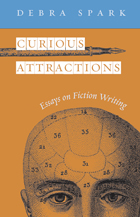 Curious Attractions: Essays on Fiction Writing
Debra Spark
University of Michigan Press, 2005 Curious Attractions: Essays on Fiction Writing is a book about what makes fiction work. In nine entertaining and instructive essays, novelist and master teacher Debra Spark pursues key questions that face both aspiring and accomplished writers, including: How does a writer find inspiration? What makes a story's closing line resonate? How can a writer "get" style? Where should an author "stand" in relation to his or her characters?
While the book will have immediate appeal for students of writing, it will also be of interest to general readers for its in-depth reading of contemporary fiction and for its take on important issues of the day: Should writers try to be more uplifting? How is emotion best conveyed in fiction? Why are serious writers in North America wedded to the realist tradition?
When she was only twenty-three, Debra Spark's best-selling anthology 20 Under 30 introduced readers to some of today's best writers, including David Leavitt, Susan Minot, Lorrie Moore, Ann Patchett, and Mona Simpson. Almost twenty years later, Spark brings this same keen critical eye to Curious Attractions, discussing a broad range of authors from multiple genres and generations.
A collection of essays in the belles-lettres tradition, Curious Attractions offers lively and instructive discussions of craft flavored with autobiographical reflections and commentary on world events. Throughout, Spark's voice is warm, articulate, and engaging as it provides valuable insights to readers and writers alike.
 Curious Behavior: Yawning, Laughing, Hiccupping, and Beyond
Robert R. Provine
Harvard University Press, 2012 Robert Provine boldly goes where other scientists seldom tread—in search of hiccups, coughs, yawns, sneezes, and other lowly, undignified human behaviors. Upon investigation, these instinctive acts bear the imprint of our evolutionary origins and can be uniquely valuable tools for understanding how the human brain works and what makes us different from other species.
Many activities showcased in Curious Behavior are contagious, but none surpasses yawning in this regard—just reading the word can make one succumb. Though we often take it as a sign of sleepiness or boredom, yawning holds clues to the development of our sociality and ability to empathize with others. Its inescapable transmission reminds us that we are sometimes unaware, neurologically programmed beasts of the herd. Other neglected behaviors yield similar revelations. Tickling, we learn, may be the key to programming personhood into robots. Coughing comes in musical, medical, and social varieties. Farting and belching have import for the evolution of human speech. And prenatal behavior is offered as the strangest exhibit of all, defying postnatal logic in every way. Our earthiest acts define Homo sapiens as much as language, bipedalism, tool use, and other more studied characteristics.
As Provine guides us through peculiarities right under our noses, he beckons us to follow with self-experiments: tickling our own feet, keeping a log of when we laugh, and attempting to suppress yawns and sneezes. Such humble investigations provide fodder for grade school science projects as well as doctoral dissertations. Small Science can yield big rewards.
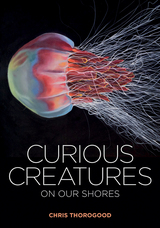 Curious Creatures on Our Shores
Chris Thorogood
Bodleian Library Publishing, 2019 Beachcombing, overturning a boulder, or simply parting the strands of seaweed in a rock pool can offer a glimpse into a thriving underwater world of astonishing creatures. Starfish which, upon losing an arm, can grow a new one; ethereal moon jellyfish pulsating in the current; baby sharks hatching from their fancifully named ‘mermaids’ purses.’
This veritable marine bestiary tells these fascinating stories of life between the tides. Featuring stunning oil paintings by the author, Curious Creatures on our Shores presents over fifty of the most unusual and remarkable marine organisms found on British coasts, from beloved seahorses and starfish to lesser-known critters like sea potatoes and sea lemons.
Inspired by the Oxford University Museum of Natural History’s exceptionally rich zoology collections, which contain millions of specimens amassed from centuries of expeditions, this book invites us to marvel anew at the natural wonders found where water and land meet.
Curious Encounters with the Natural World: From Grumpy Spiders to Hidden Tigers
Michael Jeffords
University of Illinois Press, 2017 Michael R. Jeffords and Susan L. Post have circled the globe--and explored their neighborhood--collecting images of the natural world. This book opens their personal cabinet of curiosities to tell the stories of the pair's most unusual encounters. From the "necking" battles of mate-hungry giraffes to the breathtaking beauty of millions of monarch butterflies at rest, Jeffords and Post share 200 stunning photographs and their own insightful essays to guide readers on a spectacular journey. Their training as entomologists offers unique perspectives on surprise stag beetle swarms and spider hunting habits. Their photographic eye, honed by decades of observation, finds expression in once-in-a-lifetime images. The result is an eyewitness collection of startling and unusual phenomena that illuminates the diverse life inhabiting our planet.
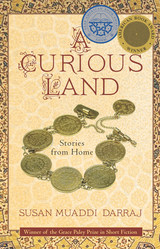 A Curious Land: Stories from Home
Susan Muaddi Darraj
University of Massachusetts Press, 2015 Winner of the 2016 American Book Award, the 2016 Arab American Book Award, and the 2014 Grace Paley Prize in Short Fiction
Susan Muaddi Darraj's short story collection about the inhabitants of a Palestinian West Bank village, Tel al-Hilou, spans generations and continents to explore ideas of memory, belonging, connection, and, ultimately, the deepest and richest meaning of home. A Curious Land gives voice to the experiences of Palestinians in the last century.
An excerpt from A Curious Land:
When Rabab lowered the magad and clapped-clapped to the well in her mother's too-big slippers, the stone jar digging into her shoulder, she didn't, at first, see the body. The morning sun glazed everything around her—the cement homes, the iron rails along one wall, the bars on the windows, the stones around the well—and made her squint her itchy eyes.
She was hungry. That was all.
They'd arrived here only last night, stopping as soon as Awwad and the men were sure the army had moved south. It must have been the third time in just a few weeks—collapse the tents, load the mules, disappear into the sands. She hoped this war would end soon, and she didn't really care who won, as long as it ended because they hadn't eaten well in two years. In the past few months, her mother had sold all her gold, except for her bracelet made of liras. It was the only thing left, and she was holding onto it, and Rabab realized, so were they all; she imagined that, the day it was sold, when her mother's wrist was bare, would signal that they were at the end.
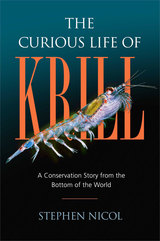 The Curious Life of Krill: A Conservation Story from the Bottom of the World
Stephen Nicol
Island Press, 2018 "Makes you feel as if you're part of an engaging dinnertime conversation." —Science News
Krill—it’s a familiar word that conjures oceans, whales, and swimming crustaceans. Scientists say they are one of most abundant animals on the planet. But when pressed, few people can accurately describe krill or explain their ecological importance. Antarctic krill have used their extraordinary adaptive skills to survive and thrive for millions of years in a dark, icy world far from human interference. But with climate change melting ice caps at the top and bottom of the world, and increased human activity and pollution, their evolutionary flexibility to withstand these new pressures may not be enough.
Eminent krill scientist Stephen Nicol wants us to know more about this enigmatic creature of the sea. He argues that it’s critical to understand krill’s complex biology in order to protect them as the krill fishing industry expands. This account of Antarctic krill-one of the largest of eighty-five krill species-takes us to the Southern Ocean to learn firsthand the difficulties and rewards of studying krill in its habitat. Nicol lays to rest the notion that krill are simply microscopic, shrimplike whale food but are in fact midway up the food chain, consumers of phytoplankton and themselves consumed by whales, seals, and penguins. From his early education about the sex lives of krill in the Bay of Fundy to a krill tattoo gone awry, Nicol uses humor and personal stories to bring the biology and beauty of krill alive. In the final chapters, he examines the possibility of an increasingly ice-free Southern Ocean and what that means for the fate of krill-and us.
Ocean enthusiasts will come away with a newfound appreciation for the complex ecology of a species we have much to learn from, and many reasons to protect.
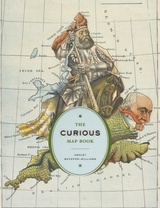 The Curious Map Book
Ashley Baynton-Williams
University of Chicago Press, 2015 Since that ancient day when the first human drew a line connecting Point A to Point B, maps have been understood as one of the most essential tools of communication. Despite differences in language, appearance, or culture, maps are universal touchstones in human civilization.
Over the centuries, maps have served many varied purposes; far from mere guides for reaching a destination, they are unique artistic forms, aides in planning commercial routes, literary devices for illuminating a story. Accuracy—or inaccuracy—of maps has been the make-or-break factor in countless military battles throughout history. They have graced the walls of homes, bringing prestige and elegance to their owners. They track the mountains, oceans, and stars of our existence. Maps help us make sense of our worlds both real and imaginary—they bring order to the seeming chaos of our surroundings.
With The Curious Map Book, Ashley Baynton-Williams gathers an amazing, chronologically ordered variety of cartographic gems, mainly from the vast collection of the British Library. He has unearthed a wide array of the whimsical and fantastic, from maps of board games to political ones, maps of the Holy Land to maps of the human soul. In his illuminating introduction, Baynton-Williams also identifies and expounds upon key themes of map production, peculiar styles, and the commerce and collection of unique maps. This incredible volume offers a wealth of gorgeous illustrations for anyone who is cartographically curious.
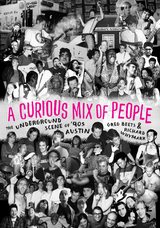 A Curious Mix of People: The Underground Scene of '90s Austin
Greg Beets
University of Texas Press, 2023 A twisting path through Austin’s underground music scene in the twentieth century’s last decade, narrated by the people who were there. It’s 1990 in Austin, Texas. The next decade will be a tipping point in the city's metamorphosis from sleepy college town to major city. Beneath the increasingly slick exterior, though, a group of like-minded contrarians were reimagining an underground music scene. Embracing a do-it-yourself ethos, record labels emerged to release local music, zines cheered and jeered acts beneath the radar of mainstream media outlets, and upstart clubs provided a home venue for new bands to build their sound. This vibrant scene valued expression over erudition, from the razor-sharp songcraft of Spoon to the fuzzed-out poptones of Sixteen Deluxe, and blurred the boundaries between observer and participant. Evolving in tandem with the city’s emergence on the national stage via the film Slacker and the SXSW conference and festivals, Austin’s musical underground became a spiritual crucible for the uneasy balance between commercial success and cultural authenticity, a tension that still resonates today. The first book about Austin underground music in the ’90s, A Curious Mix of People is an oral history that tells the story of this transformative decade through the eyes of the musicians, writers, DJs, club owners, record-store employees, and other key figures who were there.
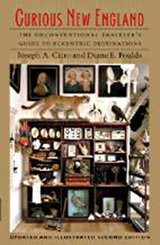 Curious New England: The Unconventional Traveler’s Guide to Eccentric Destinations
Joseph E. Citro and Diane E. Foulds
University Press of New England, 2004 New England is truly a Cabinet of Curiosities, and this indispensable guide directs you to its most bizarre, off the wall, and unsettling exhibits. Some evoke hilarity, some horror. Discover singing sand, glowing tombstones, ghostly squirrels, and a musical instrument said to cause madness. Marvel at the most mysterious manuscript in the world. Visit a miniature replica of the Holy Land or climb carved stone steps leading . . . nowhere. Curious New England points the way to all the tantalizing treats and terrifying treasures that remain tucked away in overlooked museums, private collections, and forgotten recesses of this very special region. *A cursed statue in Maine *Ageless American Megaliths *A window embedded in Vermont earth *Titus’s Arch on a New Hampshire hilltop *Artwork made from insect parts With precise directions, hours, and contact information, these fascinating pages reveal each mystery, miracle, and marvel, from world-class weirdness, to minor curiosities, to entertaining distractions. There'll be no more boring Sunday drives when you can visit a spider farm, explore the laboratory of “mad” scientist Wilhelm Reich, view the Hobo Hotel, and observe houses made from paper, wooden crates, mounds of earth—even covered bridges. And New England’s wonders never cease: discover evidence of manned flight a century before the Wright Brothers; visible phantoms manifesting from marble columns; and automobiles emerging from tarmac like dinosaurs from pits of tar. This one-of-a-kind collection spotlights all six New England states, illuminating everything that’s wicked, weird, and wonderful in every hidden corner of a region that rivals Old England in mysteries, miracles, and marvels.
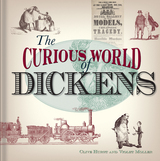 The Curious World of Dickens
Clive Hurst and Violet Moller
Bodleian Library Publishing, 2012 Charles Dickens is among the greatest English novelists, and the power of his prose can be found in his portrayals of the harsh social realities of his time, from the depiction of poverty-stricken orphan Oliver Twist to the squalor of the slums and skewering of the justice system in Bleak House.
Published to celebrate the twohundredth anniversary of Dickens’s birth, this book brings together quotations from Dickens’s novels and letters with photographs of their original covers and Victorian-era images—among them, prints, posters, and newspaper pieces—that shed light on the topics about which Dickens writes. Ordered by theme, the book covers such topics as schools in Victorian England, domestic entertainment, the introduction of the railroad, and the poor conditions in prisons and workhouses, which loom large in Dickens’s novels—and, indeed, his own childhood. Dickens was also an avid theater enthusiast who arranged productions and public readings of many of his works, and this book explores his role throughout his later years in adroitly adapting his novels for the stage.
The Curious World of Dickens breathes new life on this momentous occasion into the vibrant world inhabited by Dickens and his characters.
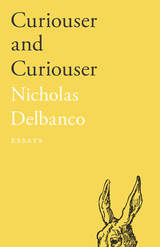 Curiouser and Curiouser: Essays
Nicholas Delbanco
Ohio State University Press, 2017 A miscellany of sorts, preeminent author and critic Nicholas Delbanco’s Curiouser and Curiouser attests to a lifelong interest in music and the visual arts as well as both “mere” and “sheer” literature. With essays ranging from the restoration of his father-in-law’s famed Stradivarius cello—known throughout the world as “The Countess of Stanlein”—to a reimagining of H. A. and Margaret Rey’s lives and the creation of their most beloved character, Curious George, Delbanco examines what it means to live and love with the arts.
Whether exploring the history of personal viewing in the business of museum-going, musing on the process of rewriting one’s earliest published work, or looking back on the twists and turns of a life that spans the greater part of the twentieth century and into the twenty-first, Delbanco’s Curiouser and Curiouser invites adventurous readers to follow him down the rabbit hole as he reflects on life as a student, an observer, a writer, a lover, a father, a teacher, and most importantly, a participant in the everyday experiences of human life.
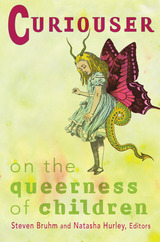 Curiouser: On The Queerness Of Children
Steven Bruhm
University of Minnesota Press, 2004 Classic essays and new work on the issue of childhood sexuality and its “queer resonances” Our culture has a dominant narrative about children: they are (and should stay) innocent of sexual desires and intentions. At the same time, children are officially, tacitly, assumed to be heterosexual. Curiouser is a book about this narrative and what happens when it takes an unexpected, or queer, turn—when the stories of childhood must confront a child whose play does not conform to the ideal of child (a)sexuality. The contributors to Curiouser examine the ostensibly simple representations of children that circulate through visual images, life narrative, children’s literature, film, and novels. At issue in these essays are the stories we tell to children, the stories we tell about children, and the stories we tell ourselves as children—stories that ultimately frame what is normative and what is queer. From the fiction of Horatio Alger, Henry James, Djuna Barnes, and Guy Davenport to the spectacles of Michael Jackson, Calvin Klein, and The Exorcist; from the narrative structure of pedophilia to evangelical Christianity; from punk tomboyism to queer girl-scouting: these scholars of childhood and sexuality scrutinize queer childhood energies in an impressive range of cultural forms. Contributors: Lauren Berlant, U of Chicago; Andre Furlani, Concordia U; Judith Halberstam, U of California, San Diego; Ellis Hanson, Cornell U; Paul Kelleher; Kathryn R. Kent, Williams College; James R. Kincaid, U of Southern California; Richard D. Mohr, U of Illinois, Urbana; Michael Moon, Johns Hopkins U; Kevin Ohi, Boston College; Eric Savoy, U of Montreal; Eve Kosofsky Sedgwick, CUNY Graduate Center; Kathryn Bond Stockton, U of Utah; Michael Warner, Rutgers U.
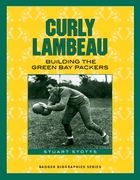 Curly Lambeau: Building the Green Bay Packers
Stuart Stotts
Wisconsin Historical Society Press, 2007 When Earl "Curly" Lambeau was a young boy growing up in Green Bay in the early 1900s, he and his friends didn't have money for a football. Instead, they kicked around a salt sack filled with sand, leaves, and pebbles. That humble beginning produced a single-minded drive for the figure whose name now graces the Green Bay Packers' stadium. This title in the Badger Biographies series charts the course of Curly Lambeau's career as a flamboyant player and coach, which paralleled the rise of professional football in this country. Lambeau revolutionized the way football is played by legitimizing passing in a game that had previously centered on running. His dedication to popularizing football in Green Bay and in the state helped build the Packer organization into the institution it has become. Yet, he was not without flaws, and this biography presents a full picture of a man whose ambitions complicated his legacy.
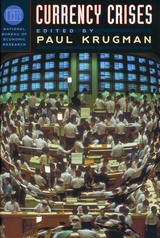 Currency Crises
Edited by Paul Krugman
University of Chicago Press, 2000 There is no universally accepted definition of a currency crisis, but most would agree that they all involve one key element: investors fleeing a currency en masse out of fear that it might be devalued, in turn fueling the very devaluation they anticipated. Although such crises—the Latin American debt crisis of the 1980s, the speculations on European currencies in the early 1990s, and the ensuing Mexican, South American, and Asian crises—have played a central role in world affairs and continue to occur at an alarming rate, many questions about their causes and effects remain to be answered. In this wide-ranging volume, some of the best minds in economics focus on the historical and theoretical aspects of currency crises to investigate three fundamental issues: What drives currency crises? How should government behavior be modeled? And what are the actual consequences to the real economy?
Reflecting the latest thinking on the subject, this offering from the NBER will serve as a useful basis for further debate on the theory and practice of speculative attacks, as well as a valuable resource as new crises loom.
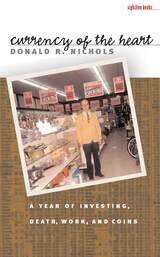 Currency of the Heart: A Year of Investing, Death, Work, and Coins
Donald Nichols
University of Iowa Press, 2002 In 1998, Don Nichols returned regularly to Iowa from his life and job in Washington, D.C., to be with his dying father and to oversee his parents’ investments. A veteran investor and investment author, Nichols found that managing the portfolio entrusted to him brought a larger understanding of mortality, family, love, work, and the choices he had made as “an agri-kid who took the road out of town and kept going.” In this insightful and money-wise book that grew out of that experience, he merges the emotions of a dutiful son with the actions of a knowledgeable investor.
Nichols uses money in myriad forms—a grandfather‘s silver dollar, stocks and bonds, salaries, pallets of coins at the U.S. Mint, on-the-job dealings with coin collectors—as touchstones for reflections on relationships, motives, and a career "like one of those moving walkways in airports." His father's health is measured, tested, and evaluated in part by the health of his finances; at the same time, the turmoil and mystery surrounding both money and relationships are reflected in this memorable story.
Wry, unsentimental, and financially savvy, Currency of the Heart is about rediscovering family, managing a portfolio, honoring promises, grieving, and healing; it is about a father and a son who once “fought like medieval villagers in a Thirty Years‘ War” and the deepening bond between a middle-age son and his aging mother. It is a multilayered story for everyone who will manage, financially and emotionally, a parent's death.
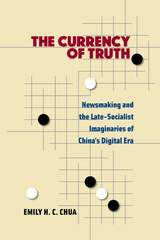 The Currency of Truth: Newsmaking and the Late-Socialist Imaginaries of China's Digital Era
Emily H. C. Chua
University of Michigan Press, 2023 China’s news sector is a place where newsmakers, advertising executives, company bosses, and Party officials engage one another in contingent and evolving arrangements that run from cooperation and collaboration to manipulation and betrayal. Drawing on long-term ethnographic fieldwork with journalists, editors, and executives at a newspaper in Guangzhou, The Currency of Truth brings its readers into the lives of the people who write, publish, and profit from news in this milieu. The book shows that far from working as mere cogs in a Party propaganda machine, these individuals are immersed in fluidly shifting networks of formal and informal relationships, which they carefully navigate to pursue diverse goals.
In The Currency of Truth, Emily H. C. Chua argues that news in China works less as a medium of mass communication than as a kind of currency as industry players make and use news articles to create agreements, build connections, and protect and advance their positions against one another. Looking at the ethical and professional principles that well-intentioned and civically minded journalists strive to uphold, and the challenges and doubts that they grapple with in the process, Chua brings her findings into conversation around “post-truth” news and the “crisis” of professional journalism in the West. The book encourages readers to rethink contemporary news, arguing that rather than setting out from the assumption that news works either to inform or deceive its publics, we should explore the “post-public” social and political imaginaries emerging among today’s newsmakers and remaking the terms of their practice.
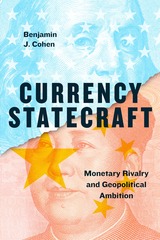 Currency Statecraft: Monetary Rivalry and Geopolitical Ambition
Benjamin J. Cohen
University of Chicago Press, 2018 At any given time, a limited number of national currencies are used as instruments of international commerce, to settle foreign trade transactions or store value for investors and central banks. How countries whose currencies gain international appeal choose to use this status forms their strategy of currency statecraft. In different circumstances, issuing governments may welcome and promote the internationalization of their currency, tolerate it, or actively oppose it. Benjamin J. Cohen offers a provocative explanation of the strategic policy choices at play.
In a comprehensive review that ranges from World War II to the present, Cohen convincingly argues that one goal stands out as the primary motivation for currency statecraft: the extent of a country’s geopolitical ambition, or how driven it is to build or sustain a prominent place in the international community. When a currency becomes internationalized, it generally increases the power of the nation that produces it. In the persistent contestation that characterizes global politics, that extra edge can matter greatly, making monetary rivalry an integral component of geopolitics. Today, the major example of monetary rivalry is the emerging confrontation between the US dollar and the Chinese renminbi. Cohen describes how China has vigorously promoted the international standing of its currency in recent years, even at the risk of exacerbating relations with the United States, and explains how the outcome could play a major role in shaping the broader geopolitical engagement between the two superpowers.
Current Anthropology, volume 62 number 4 (August 2021)
The University of Chicago Press
University of Chicago Press Journals, 2021 This is volume 62 issue 4 of Current Anthropology. Established more than sixty years ago, Current Anthropology is the leading broad-based journal in anthropology. It seeks to publish the best theoretical and empirical research across all subfields of the discipline, ranging from the origins of the human species to the interpretation of the complexities of modern life.
Current Anthropology, volume 62 number 5 (October 2021)
The University of Chicago Press
University of Chicago Press Journals, 2021 This is volume 62 issue 5 of Current Anthropology. Established more than sixty years ago, Current Anthropology is the leading broad-based journal in anthropology. It seeks to publish the best theoretical and empirical research across all subfields of the discipline, ranging from the origins of the human species to the interpretation of the complexities of modern life.
Current Anthropology, volume 62 number 6 (December 2021)
The University of Chicago Press
University of Chicago Press Journals, 2021 This is volume 62 issue 6 of Current Anthropology. Established more than sixty years ago, Current Anthropology is the leading broad-based journal in anthropology. It seeks to publish the best theoretical and empirical research across all subfields of the discipline, ranging from the origins of the human species to the interpretation of the complexities of modern life.
Current Anthropology, volume 62 number S24 (October 2021)
The University of Chicago Press
University of Chicago Press Journals, 2021 This is volume 62 issue S24 of Current Anthropology. Established more than sixty years ago, Current Anthropology is the leading broad-based journal in anthropology. It seeks to publish the best theoretical and empirical research across all subfields of the discipline, ranging from the origins of the human species to the interpretation of the complexities of modern life.
Current Anthropology, volume 63 number 1 (February 2022)
The University of Chicago Press
University of Chicago Press Journals, 2022 This is volume 63 issue 1 of Current Anthropology. Established more than sixty years ago, Current Anthropology is the leading broad-based journal in anthropology. It seeks to publish the best theoretical and empirical research across all subfields of the discipline, ranging from the origins of the human species to the interpretation of the complexities of modern life.
Current Anthropology, volume 63 number 2 (April 2022)
The University of Chicago Press
University of Chicago Press Journals, 2022 This is volume 63 issue 2 of Current Anthropology. Established more than sixty years ago, Current Anthropology is the leading broad-based journal in anthropology. It seeks to publish the best theoretical and empirical research across all subfields of the discipline, ranging from the origins of the human species to the interpretation of the complexities of modern life.
Current Anthropology, volume 63 number 3 (June 2022)
The University of Chicago Press
University of Chicago Press Journals, 2022 This is volume 63 issue 3 of Current Anthropology. Established more than sixty years ago, Current Anthropology is the leading broad-based journal in anthropology. It seeks to publish the best theoretical and empirical research across all subfields of the discipline, ranging from the origins of the human species to the interpretation of the complexities of modern life.
Current Anthropology, volume 63 number 4 (August 2022)
The University of Chicago Press
University of Chicago Press Journals, 2022 This is volume 63 issue 4 of Current Anthropology. Established more than sixty years ago, Current Anthropology is the leading broad-based journal in anthropology. It seeks to publish the best theoretical and empirical research across all subfields of the discipline, ranging from the origins of the human species to the interpretation of the complexities of modern life.
Current Anthropology, volume 63 number 5 (October 2022)
The University of Chicago Press
University of Chicago Press Journals, 2022 This is volume 63 issue 5 of Current Anthropology. Established more than sixty years ago, Current Anthropology is the leading broad-based journal in anthropology. It seeks to publish the best theoretical and empirical research across all subfields of the discipline, ranging from the origins of the human species to the interpretation of the complexities of modern life.
Current Anthropology, volume 63 number 6 (December 2022)
The University of Chicago Press
University of Chicago Press Journals, 2022 This is volume 63 issue 6 of Current Anthropology. Established more than sixty years ago, Current Anthropology is the leading broad-based journal in anthropology. It seeks to publish the best theoretical and empirical research across all subfields of the discipline, ranging from the origins of the human species to the interpretation of the complexities of modern life.
Current Anthropology, volume 63 number S25 (December 2022)
The University of Chicago Press
University of Chicago Press Journals, 2022 This is volume 63 issue S25 of Current Anthropology. Established more than sixty years ago, Current Anthropology is the leading broad-based journal in anthropology. It seeks to publish the best theoretical and empirical research across all subfields of the discipline, ranging from the origins of the human species to the interpretation of the complexities of modern life.
Current Anthropology, volume 64 number 1 (February 2023)
The University of Chicago Press
University of Chicago Press Journals, 2023 This is volume 64 issue 1 of Current Anthropology. Established more than sixty years ago, Current Anthropology is the leading broad-based journal in anthropology. It seeks to publish the best theoretical and empirical research across all subfields of the discipline, ranging from the origins of the human species to the interpretation of the complexities of modern life.
Current Anthropology, volume 64 number 2 (April 2023)
The University of Chicago Press
University of Chicago Press Journals, 2023 This is volume 64 issue 2 of Current Anthropology. Established more than sixty years ago, Current Anthropology is the leading broad-based journal in anthropology. It seeks to publish the best theoretical and empirical research across all subfields of the discipline, ranging from the origins of the human species to the interpretation of the complexities of modern life.
Current Anthropology, volume 64 number 3 (June 2023)
The University of Chicago Press
University of Chicago Press Journals, 2023 This is volume 64 issue 3 of Current Anthropology. Established more than sixty years ago, Current Anthropology is the leading broad-based journal in anthropology. It seeks to publish the best theoretical and empirical research across all subfields of the discipline, ranging from the origins of the human species to the interpretation of the complexities of modern life.
Current Anthropology, volume 64 number 4 (August 2023)
The University of Chicago Press
University of Chicago Press Journals, 2023 This is volume 64 issue 4 of Current Anthropology. Established more than sixty years ago, Current Anthropology is the leading broad-based journal in anthropology. It seeks to publish the best theoretical and empirical research across all subfields of the discipline, ranging from the origins of the human species to the interpretation of the complexities of modern life.
Current Anthropology, volume 64 number 5 (October 2023)
The University of Chicago Press
University of Chicago Press Journals, 2023 This is volume 64 issue 5 of Current Anthropology. Established more than sixty years ago, Current Anthropology is the leading broad-based journal in anthropology. It seeks to publish the best theoretical and empirical research across all subfields of the discipline, ranging from the origins of the human species to the interpretation of the complexities of modern life.
Current Anthropology, volume 64 number 6 (December 2023)
The University of Chicago Press
University of Chicago Press Journals, 2023 This is volume 64 issue 6 of Current Anthropology. Established more than sixty years ago, Current Anthropology is the leading broad-based journal in anthropology. It seeks to publish the best theoretical and empirical research across all subfields of the discipline, ranging from the origins of the human species to the interpretation of the complexities of modern life.
Current Anthropology, volume 65 number 1 (February 2024)
The University of Chicago Press
University of Chicago Press Journals, 2024 This is volume 65 issue 1 of Current Anthropology. Established more than sixty years ago, Current Anthropology is the leading broad-based journal in anthropology. It seeks to publish the best theoretical and empirical research across all subfields of the discipline, ranging from the origins of the human species to the interpretation of the complexities of modern life.
Current Anthropology, volume 65 number 2 (April 2024)
The University of Chicago Press
University of Chicago Press Journals, 2024 This is volume 65 issue 2 of Current Anthropology. Established more than sixty years ago, Current Anthropology is the leading broad-based journal in anthropology. It seeks to publish the best theoretical and empirical research across all subfields of the discipline, ranging from the origins of the human species to the interpretation of the complexities of modern life.
Current Anthropology, volume 65 number 3 (June 2024)
The University of Chicago Press
University of Chicago Press Journals, 2024 This is volume 65 issue 3 of Current Anthropology. Established more than sixty years ago, Current Anthropology is the leading broad-based journal in anthropology. It seeks to publish the best theoretical and empirical research across all subfields of the discipline, ranging from the origins of the human species to the interpretation of the complexities of modern life.
Current Anthropology, volume 65 number 4 (August 2024)
The University of Chicago Press
University of Chicago Press Journals, 2024 This is volume 65 issue 4 of Current Anthropology. Established more than sixty years ago, Current Anthropology is the leading broad-based journal in anthropology. It seeks to publish the best theoretical and empirical research across all subfields of the discipline, ranging from the origins of the human species to the interpretation of the complexities of modern life.
Current Anthropology, volume 65 number 5 (October 2024)
The University of Chicago Press
University of Chicago Press Journals, 2024 This is volume 65 issue 5 of Current Anthropology. Established more than sixty years ago, Current Anthropology is the leading broad-based journal in anthropology. It seeks to publish the best theoretical and empirical research across all subfields of the discipline, ranging from the origins of the human species to the interpretation of the complexities of modern life.
Current Anthropology, volume 65 number 6 (December 2024)
The University of Chicago Press
University of Chicago Press Journals, 2024 This is volume 65 issue 6 of Current Anthropology. Established more than sixty years ago, Current Anthropology is the leading broad-based journal in anthropology. It seeks to publish the best theoretical and empirical research across all subfields of the discipline, ranging from the origins of the human species to the interpretation of the complexities of modern life.
Current Anthropology, volume 65 number S26 (December 2024)
The University of Chicago Press
University of Chicago Press Journals, 2024 This is volume 65 issue S26 of Current Anthropology. Established more than sixty years ago, Current Anthropology is the leading broad-based journal in anthropology. It seeks to publish the best theoretical and empirical research across all subfields of the discipline, ranging from the origins of the human species to the interpretation of the complexities of modern life.
Current Anthropology, volume 66 number 1 (February 2025)
The University of Chicago Press
University of Chicago Press Journals, 2025 This is volume 66 issue 1 of Current Anthropology. Established more than sixty years ago, Current Anthropology is the leading broad-based journal in anthropology. It seeks to publish the best theoretical and empirical research across all subfields of the discipline, ranging from the origins of the human species to the interpretation of the complexities of modern life.
Current Anthropology, volume 66 number 2 (April 2025)
The University of Chicago Press
University of Chicago Press Journals, 2025 This is volume 66 issue 2 of Current Anthropology. Established more than sixty years ago, Current Anthropology is the leading broad-based journal in anthropology. It seeks to publish the best theoretical and empirical research across all subfields of the discipline, ranging from the origins of the human species to the interpretation of the complexities of modern life.
Current Anthropology, volume 66 number 3 (June 2025)
The University of Chicago Press
University of Chicago Press Journals, 2025 This is volume 66 issue 3 of Current Anthropology. Established more than sixty years ago, Current Anthropology is the leading broad-based journal in anthropology. It seeks to publish the best theoretical and empirical research across all subfields of the discipline, ranging from the origins of the human species to the interpretation of the complexities of modern life.
Current Anthropology, volume 66 number 4 (August 2025)
The University of Chicago Press
University of Chicago Press Journals, 2025 This is volume 66 issue 4 of Current Anthropology. Established more than sixty years ago, Current Anthropology is the leading broad-based journal in anthropology. It seeks to publish the best theoretical and empirical research across all subfields of the discipline, ranging from the origins of the human species to the interpretation of the complexities of modern life.
Current Anthropology, volume 66 number 5 (October 2025)
The University of Chicago Press
University of Chicago Press Journals, 2025 This is volume 66 issue 5 of Current Anthropology. Established more than sixty years ago, Current Anthropology is the leading broad-based journal in anthropology. It seeks to publish the best theoretical and empirical research across all subfields of the discipline, ranging from the origins of the human species to the interpretation of the complexities of modern life.
Current Anthropology, volume 66 number S27 (August 2025)
The University of Chicago Press
University of Chicago Press Journals, 2025 This is volume 66 issue S27 of Current Anthropology. Established more than sixty years ago, Current Anthropology is the leading broad-based journal in anthropology. It seeks to publish the best theoretical and empirical research across all subfields of the discipline, ranging from the origins of the human species to the interpretation of the complexities of modern life.
The Current Comparator
W.J.M. Moore
The Institution of Engineering and Technology, 1988 In 1961, Moore and Miljanic in collaboration with N. L Kusters developed the current comparator, for which a patent was granted in 1964. Since that time they and their associates have applied this technique toward advancing the art of electrical measurement.
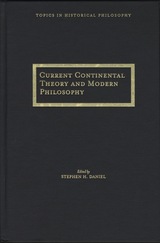 Current Continental Theory and Modern Philosophy
Stephen Daniel
Northwestern University Press, 2006 For decades Continental theorists from Derrida to Deleuze have engaged in provocative, penetrating, and often extensive examinations of modern philosophers-studies that have opened up new ways to think about figures such as Descartes, Spinoza, Leibniz, Locke, Hume, Rousseau, and Kant. This volume, for the first time, gives this work its due. A systematic rereading of early modern philosophers in the light of recent Continental philosophy, it exposes overlooked but critical aspects of sixteenth- through eighteenth-century philosophy even as it brings to light certain historical assumptions that have colored-and distorted-our understanding of modernist thought. This volume thus retrieves modern thinkers from the modernistic ways in which they have been portrayed since the nineteenth century; at the same time, it enhances our view of the roots and concerns of current Continental thought.
What claims does the early modern period have on contemporary philosophy? How have recent theorists engaged this material, and why? In answer, some of these essays explore how major Continental theorists such as Derrida, Deleuze, Le Doeuff, Irigaray, Kristeva, and Althusser explicate the ideas of classical modern thinkers; others draw on recent Continental insights to examine the doctrines of modern philosophers beginning with Machiavelli and ending with Kant. Together they show how current Continental theory reinvigorates the study of the history of modern philosophers by transforming not only how we interpret their answers to certain questions, but also how we understand the very nature of these questions.
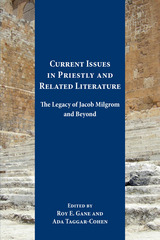 Current Issues in Priestly and Related Literature: The Legacy of Jacob Milgrom and Beyond
Roy E. Gane
SBL Press, 2015 New directions and fresh insight for scholars and students
The single greatest catalyst and contributor to our developing understanding of priestly literature has been Jacob Milgrom (1923-2010), whose seminal articles, provocative hypotheses, and comprehensively probing books vastly expanded and significantly altered scholarship regarding priestly and related literature. Nineteen articles build on Milgrom's work and look to future directions of research. Essays cover a range of topics including the interpretation, composition and literary structure of priestly and holiness texts as well as their relationships to deuteronomic and extra-biblical texts. The book includes a bibliography of Milgrom's work published between 1994 and 2014.
Features:
Comparisons with Mesopotamian Hittite texts
Essays from a diverse group of scholars representing a variety of backgrounds, perspectives, and methodologies
Charts and tables illustrate complex relationships and structures
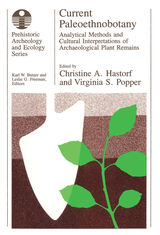 Current Paleoethnobotany: Analytical Methods and Cultural Interpretations of Archaeological Plant Remains
Edited by Christine A. Hastorf and Virginia S. Popper
University of Chicago Press, 1989 Paleoethnobotany offers powerful tools for reconstructing past cultures by examining the interaction of human populations with the plant world. Plant remains from archaeological sites can provide information for a number of disciplines: archaeologists may use such remains to examine how plants were used, how agriculture changed over time, or how plant offerings in burials signaled social status; ecologists and botanists may use them to study morphological changes in plants due to domestication.
Combining case studies and theoretical discussions, Current Paleoethnobotany presents the first full discussion of the major stages and problems of paleoethnobotanical research, from designing and testing equipment, such as flotation machines, to quantification and interpretation. The volume explores a wide range of issues concerning collection techniques, analytical procedures, and interpretive models that will provide accurate information about past human societies from plant remains. The contributors offer data on specific regions as well as more general background information on the basic techniques of paleoethnobotany for the nonspecialist. Throughout, they explicitly examine the assumptions underlying paleoethnobotanical methods and the ways in which those assumptions affect anthropological and ecological research questions.
Based on a symposium presented at the 1985 meeting of the Society for American Archaeology, Current Paleoethnobotany moves beyond a technique-oriented view of paleoethnobotany to successfully integrate current thinking about both procedures and research goals. The contributors demonstrate the potential value of the field of paleoethnobotany and open the way for further discussion and improvement.
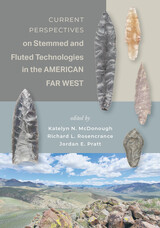 Current Perspectives on Stemmed and Fluted Technologies in the American Far West
Edited by Katelyn N. McDonough, Richard L. Rosencrance, and Jordan E. Pratt
University of Utah Press, 2023 This volume provides the most comprehensive overview of archaeological research into the late Pleistocene and early Holocene occupation of the North American Far West in over a decade. It focuses on the relationship between stemmed and fluted point technologies in the region, which has recently risen to the forefront of debate about the initial settlement of the Americas. Established and early career researchers apply a wide range of analytical approaches to explore chronological, geographical, and technological aspects of these tools and what they reveal about the people who made them. While such interrelationships have intrigued archaeologists for nearly a century, until now they have not been systematically examined together in a single curated volume.
Contributions are organized into three main sections: stemmed point technologies, fluted point technologies, and broader interactions. Topics range from regional overviews of chronologies and technologies to site-level findings containing extensive new data. The culmination of many years of work by dozens of researchers, this volume lays new groundwork for understanding technological innovation, diversity, and exchange among early Indigenous peoples in North America.
Current Studies in Spanish Linguistics
Héctor Campos and Fernando Martinez-Gil, Editors
Georgetown University Press, 1991 In this invited volume, experts in Spanish linguistics who subscribe to the Chomskyian thory of Universal Grammar, along with the editors, approach the general applicability of this model from the perspectives of their subdisciplines: language acquisition, syntax, semantics, phonology, and morphology. Their research points to the verification of the Chomskyian linguistic theory as a general framework for explaining phenomena in language acquistion and use—and, more generally, to the possible development of a model of mind based on linguistic theory. Current Studies in Spanish Linguistics will interest all specialists in Spanish and theoretical linguistics, as well as those interested in cognitive science, psychology, philosophy of mind, and artificial intelligence.
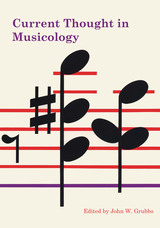 Current Thought in Musicology
Edited by John W. Grubbs
University of Texas Press, 1976 Current Thought in Musicology covers a variety of topics, ranging from the Middle Ages to the present and touching on all the major disciplines of musicology: music history, theory and composition, music education, and performance. Taken together, the nine papers constitute a broad overview of the direction of music scholarship in the 1970s. In “Tractatus Esthetico-Semioticus: Model of the Systems of Human Communication,” Charles Seeger presents a model of the situations in which the study of humanistic art may best be conducted. Charles Hamm writes in “The Ecstatic and the Didactic: A Pattern in American Music” of the pattern of conflicting points of view in music history and theory. American composer Elliott Carter, in his chapter titled “Music and the Time Screen,” presents a lucid explanation of his compositional process, including his concept of musical time. In “Instruments and Voices in the Fifteenth-Century Chanson,” Howard Mayer Brown suggests the nature of fifteenth-century performance, drawn from iconography and various musical sources. “Nottebohm Revisited,” by Lewis Lockwood, reexamines Beethoven’s sketchbooks, showing the extent to which performing editions of his work must be updated. Daniel Heartz’s article, “The Chanson in the Humanist Era,” is multidisciplinary and will interest a variety of scholars, including French historians and French literary historians. Gilbert Chase applies structuralism to musicological studies in his chapter, “Musicology, History, and Anthropology: Current Thoughts.” The concluding essays, “The Prospects for Research in Medieval Music in the 1970’s,” by Gilbert Reaney, and “The Library of the Mind: Observations on the Relationship between Musical Scholarship and Bibliography,” by Vincent Duckles, provide a unique view of the opportunities for further work in these areas. The volume also includes an introduction by the editor, notes on the contributors, and an index. Current Thought in Musicology is the result of a symposium held at the University of Texas at Austin in 1971.
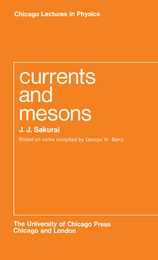 Currents and Mesons
J. J. Sakurai
University of Chicago Press, 1969 Current and Mesons is the most recent publication in the Chicago Lectures in Physics series. The book presents Professor Sakurai's introduction to a new field of elementary particle physics which has become increasingly important in the past few years. It is based on a course given to his advanced graduate students in theoretical high-energy physics at the University of Chicago.
The author begins with a brief review of SU (3). The major topics then treated are the divergence condition and current commutation relations, vector meson universality, PCAC and the Goldberger-Treiman relation, soft pion processes, and asymptotic symmetries and spectral-function sum rules. The book concludes with a discussion of notation and of normalization convention.
Professor Sakurai's work deals with topics on which much of current discussion on the theory of elementary particles is focused. The material is designed for the advanced student who is seriously interested in doing original work, and as such provides a much needed introduction to the present literature in the field.
Currents in American Medicine: A Developmental View of Medical Care and Education
Julius B. Richmond
Harvard University Press A well-known American doctor and medical educator presents a succinct review of medical care and education in the United States since 1900. The author begins with the revamping of medical education at the turn of the century, then discusses the growing conservatism of the American Medical Association (AMA) during the Depression and World War II. He describes the trend toward specialization, which fostered the growth of professional societies outside the AMA and led to complex government-university research programs, and concludes with a survey of recent health legislation and a look at the future.
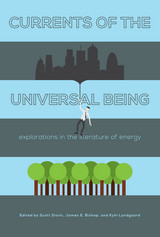 Currents of the Universal Being: Explorations in the Literature of Energy
Scott Slovic
Texas Tech University Press, 2015 Energy scholar Vaclav Smil wrote in 2003, “Tug at any human use of energy and you will find its effects cascading throughout society.” Too often public discussions of energy-related issues become gridlocked in debates concerning cost, environmental degradation, and the plausibility (or implausibility) of innovative technologies. But the topic of energy is much broader and deeper than these debates typically reveal.
The literature of energy bears this out—and takes the notion further, revealing in vivid stories and images how energy permeates the fundamental nature of existence. Readings in this collection encompass a wide array of topics, from addiction to oil to life “off the grid,” from the power of the atom to the power of bicycle technology. Presenting a wide array of poetry, fiction, nonfiction, and interviews—ranging from George Eliot’s nineteenth-century
novel Mill on the Floss to Sandra Steingraber’s recent writing on the subject of fracking—this first-of-its-kind anthology aims to capture the interest of the general reader as well as to serve as a potential textbook for college-level writing classes or environmental studies classes that aspire to place the technical subject of energy into a broader cultural context.
Curricular Problems in Science at the College Level
Palmer O. Johnson
University of Minnesota Press, 1930
Curricular Problems in Science at the College Level was first published in 1930. Minnesota Archive Editions uses digital technology to make long-unavailable books once again accessible, and are published unaltered from the original University of Minnesota Press editions.
Curriculum as Conversation: Transforming Traditions of Teaching and Learning
Arthur N. Applebee
University of Chicago Press, 1996 “Applebee's central point, the need to teach 'knowledge in context,' is absolutely crucial for the hopes of any reformed curriculum. His experience and knowledge give his voice an authority that makes many of the current proposals on both the left and right seem shallow by comparison.”—Gerald Graff, University of Chicago
 A Curriculum of Fear: Homeland Security in U.S. Public Schools
Nicole Nguyen
University of Minnesota Press, 2016 Welcome to Milton High School, where fear is a teacher’s best tool and every student is a soldier in the war on terror. A struggling public school outside the nation’s capital, Milton sat squarely at the center of two trends: growing fear of resurgent terrorism and mounting pressure to run schools as job training sites. In response, the school established a specialized Homeland Security program. A Curriculum of Fear takes us into Milton for a day-to-day look at how such a program works, what it means to students and staff, and what it says about the militarization of U.S. public schools and, more broadly, the state of public education in this country. Nicole Nguyen guides us through a curriculum of national security–themed classes, electives, and internships designed through public-private partnerships with major defense contractors like Northrop Grumman and federal agencies like the NSA. She introduces us to students in the process of becoming a corps of “diverse workers” for the national security industry, learning to be “vigilant” citizens; and she shows us the everyday realities of a program intended to improve the school, revitalize the community, and eliminate the achievement gap. With reference to critical work on school militarization, neoliberal school reform, the impact of the global war on terror on everyday life, and the political uses of fear, A Curriculum of Fear maps the contexts that gave rise to Milton’s Homeland Security program and its popularity. Ultimately, as the first ethnography of such a program, the book provides a disturbing close encounter with the new normal imposed by the global war on terror—a school at once under siege and actively preparing for the siege itself.
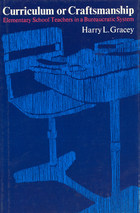 Curriculum or Craftsmanship: Elementary School Teachers in a Bureaucratic System
Harry L. Gracey
University of Chicago Press, 1972 Sociologist Harry L. Gracey spent two years studying an East-Coast school system, which he calls "Brookview," and determined that the bureaucratic social structure of schools can have a profound and irreversibly negative effect on the creativity of teachers. This volume tells the story of the "Wilbur Wright" elementary school in Brookview. It examines the relationship between the educational institution as a bureaucracy and the goals of the two main types of teaching orientation found in elementary schools such as Wright.
The majority of teachers are "production" oriented. They believe that their job is to see that the children in their charge complete as much of the standardized grade level curriculum as possible during the school year. They do achieve some success in preparing children for life in a society where bureaucracy is the dominant form of social organization.
The other significant type of teaching orientation is that of the "craftsmen." These instructors see their goal as the development of each individual's learning potential, with the curriculum built upon the specific needs and interests of each child. Bureaucratic school structures do nothing to promote this kind of teaching.
Any ideas that are at variance with the school's organizational structure will fail. The craftsman teachers do not have the time to communicate the standardized programs desired by the school board and also to make use of their own individualistic techniques. Further, the continued use of the former cancels the effects of the craftsman approach.
In delineating his conclusions, Professor Gracey includes his observations on the community and educational setting of the study, the two types of teachers, the administration, the parents, and the children's response to educational organization.
This study is unique in approaching its educational subject matter from a sociological point of view; Professor Gracey intended it as a study of behavior in organizations. It should also serve educational goals, however, and will therefore interest educators and concerned citizens as well as sociologists.
The Curse: A CULTURAL HISTORY OF MENSTRUATION
Janice Delaney, Mary Jane Lupton, and Emily Toth
University of Illinois Press, 1988
"In its hard headed, richly documented concreteness, it is worth a thousand polemics."
-- New York Times, from a review of the first edition
"The Curse deserves a place in every women's studies library collection."
-- Sharon Golub, editor of Lifting the curse of Menstruation
"A stimulating and useful book, both for the scholarly and the general reader."
-- Paula A. Treichler, co-author of A Feminist Dictionary
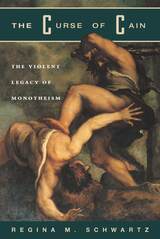 The Curse of Cain: The Violent Legacy of Monotheism
Regina M. Schwartz
University of Chicago Press, 1997 The Curse of Cain confronts the inherent ambiguities of biblical stories on many levels and, in the end, offers an alternative, inspiring reading of the Bible that is attentive to visions of plenitude rather than scarcity, and to an ethics based on generosity rather than violence.
"[A] provocative and timely examination of the interrelationship of monotheism and violence. . . . This is a refreshing alternative to criticism-biblical and otherwise-that so often confuses interpretation with closure; it is an invitation to an ethic of possibility, plenitude, and generosity, a welcome antidote to violence, as important for its insights into memory, identity, and place as for its criticism of monotheism's violent legacy."—Booklist
"Brilliant and provocative, this is a work demanding close attention from critics, theologians, and all those interested in the imaginative roots of common life."—Rowan Williams, Bishop of Monmouth
"A stunningly important book."—Walter Brueggemann, Theology Today
"Artfully rendered, endlessly provocative."—Lawrence Weschler, New Yorker
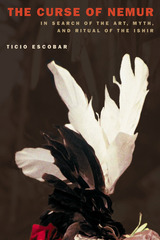 The Curse of Nemur: In Search of the Art, Myth and Ritual of the Ishir
Ticio Escobar
University of Pittsburgh Press, 2007
The Tomáraho, a subgroup of the Ishir (Chamacoco) of Paraguay, are one of the few remaining indigenous populations who have managed to keep both their language and spiritual beliefs intact. They have lived for many years in a remote region of the Gran Chaco, having limited contact with European or Latin American cultures. The survival of the Tomáraho has been tenuous at best; at the time of this writing there were only eighty-seven surviving members.
Ticio Escobar, who lived extensively among the Tomáraho, draws on his acquired knowledge of Ishir beliefs to confront them with his own Western ideology, and records a unique dialogue between cultures that counters traditional anthropological interpretation. The Curse of Nemur--which is part field diary, part art critique, and part cultural anthropology—offers us a view of the world from an entirely new perspective, that of the Ishir. We acquire deep insights into their powerful and enigmatic narrative myths, which find expression in the forms of body painting, feather decoration, dream songs, shamanism, and ritual.
Through dramatic photographs, native drawings, extensive examination of color and its importance in Ishir art, and Escobar’s lucid observation, The Curse of Nemur illuminates the seamless connection of religious practice and art in Ishir culture. It offers a glimpse of an aesthetic “other,” and in so doing, causes us to reexamine Western perspectives on the interpretation of art, belief, and Native American culture.
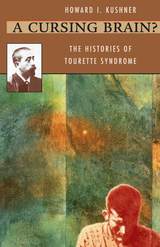 A Cursing Brain?: The Histories of Tourette Syndrome
Howard I. Kushner
Harvard University Press, 1999 Over a century and a half ago, a French physician reported the bizarre behavior of a young aristocratic woman who would suddenly, without warning, erupt in a startling fit of obscene shouts and curses. The image of the afflicted Marquise de Dampierre echoes through the decades as the emblematic example of an illness that today represents one of the fastest-growing diagnoses in North America. Tourette syndrome is a set of behaviors, including recurrent ticcing and involuntary shouting (sometimes cursing) as well as obsessive-compulsive actions. The fascinating history of this syndrome reveals how cultural and medical assumptions have determined and radically altered its characterization and treatment from the early nineteenth century to the present.
A Cursing Brain? traces the problematic classification of Tourette syndrome through three distinct but overlapping stories: that of the claims of medical knowledge, that of patients' experiences, and that of cultural expectations and assumptions. Earlier researchers asserted that the bizarre ticcing and impromptu vocalizations were psychological--resulting from sustained bad habits or lack of self-control. Today, patients exhibiting these behaviors are seen as suffering from a neurological disease and generally are treated with drug therapy. Although current clinical research indicates that Tourette's is an organic disorder, this pioneering history of the syndrome reminds us to be skeptical of medical orthodoxies so that we may stay open to fresh understandings and more effective interventions.
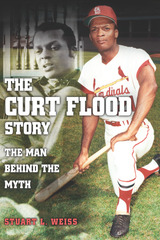 The Curt Flood Story: The Man behind the Myth
Stuart L. Weiss
University of Missouri Press, 2018 Curt Flood, former star center fielder for the St. Louis Cardinals, is a hero to many for selflessly sacrificing his career to challenge the legality of baseball’s reserve system. Although he lost his case before the Supreme Court, he has become for many a martyr in the eventually successful battle for free agency. Sportswriters and fans alike have helped to paint a picture of Flood as a larger-than-life figure, a portrait that, unhappily, cannot stand closer inspection. This book reveals the real Curt Flood—more man than myth. Flood stirred up a hornet’s nest by refusing to be traded from the Cardinals to the Philadelphia Phillies after the 1969 season, arguing that Major League Baseball’s reserve system reduced him to the status of bondage. Flood decided to resist a system in which his contract could be traded without his consent and in which he was not at liberty to negotiate his services in an open market. Stuart Weiss examines the man behind the decision, exploring the span of Flood’s life and shedding light on his relationships with those who helped shape his determination to sue baseball and providing a new perspective on the lawsuit that found its way to the U.S. Supreme Court. Although a superb player, Flood was known to be temperamental and sensitive; in suing Major League Baseball he transformed his grievances against the Cardinals front office into an attack on how the business of big-league ball was conducted. Weiss shows that Flood was far from the stereotypical “dumb jock” but was rather a proud, multifaceted black man in a business run by white moguls. By illuminating Flood’s private side, rarely seen by the public, he reveals how Flood misled a gullible press on a regular basis and how his 1971 memoir, The Way It Is, didn’t tell it the way it really was. Drawing on previously untapped sources, Weiss examines more fully and deeply than other writers the complexities of Flood’s decision to pursue his lawsuit—and demonstrates that the picture of Flood as a martyr for free agency is a myth. He suggests why, of all the players traded or sold through the years, it was Flood who brought this challenge. Weiss also explains how Flood’s battle against the reserve system cannot be understood in isolation from the personal experiences that precipitated it, such as his youth in a dysfunctional home, his troubled first marriage, his financial problems, and his unwavering commitment to the Cardinals. The Curt Flood Story is a realistic account of an eloquent man who presented a warm, even vulnerable, face to the public as well as to friends, while hiding his inner furies. It shows that Flood was neither a hero nor a martyr but a victim of unique circumstances and his own life.
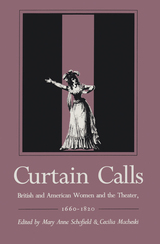 Curtain Calls: British and American Women and the Theater, 1660–1820
Mary A. Schofield
Ohio University Press, 1991 “I here and there o’heard a Coxcomb cry,
Ah, rot—’tis a Woman’s Comedy.” Thus Aphra Behn ushers in a new era for women in the British Theatre (Sir Patient Fancy, 1678). In the hundred years that were to follow—and exactly those years that Curtain Calls examines—women truly took the theater world by storm. For each woman who chose a career in the theater world of the eighteenth century, there is a unique tale of struggle, insult, success, good or bad fortune, disaster, seduction, or fame. Whether acting, writing, reviewing, or stage managing, women played a major, if frequently unacknowledged, role in the history of the theater from the late seventeenth through the early nineteenth centuries. From Alpha Behn’s earliest plays through the glorious celebrity of Sara Siddons, women molded the taste of the age and carved out in the theater one of the few available opportunities for independence and renown. Not all the women who tried succeeded, of course, and even the best faced opposition as they challenged the male stronghold of playwriting and theater managing. Curtain Calls maps the new territory as these pioneering women staked it for their own; it chronicles their lives, their triumphs, and their losses. We begin with Aphra Behn, whose first play was staged in 1670, and conclude in the early decades of the nineteenth century with Inchbald and Siddons. The one hundred and fifty years encompassed by their lives contain the careers of dozens of lesser–known women, a network, as Dr. Johnson would have it, encompassing both talent and tribulation. Contributors include: Edward Langhans, Linda R. Payne, Pat Rogers, Maureen e. Mulvihill, Deborah Payne, Betty Rizzo, Ellen Donkin, Frances M. Kavenik, Jessica Munns, nancy Cotton, Edna L. Steevs, Doreen Saar, Jean B. Kern, Katherine M. Rogers, Constance Clark, William J. Burling, Judith Phillips Stanton, Douglas Butler, Rose Zimbardo, and the editors.
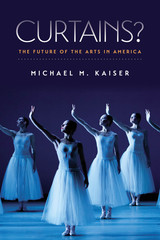 Curtains?: The Future of the Arts in America
Michael M. Kaiser
Brandeis University Press, 2015 In this clear-minded but sobering book, Michael M. Kaiser assesses the current state of arts institutions—orchestras; opera, ballet, modern dance, and theater companies; and even museums. According to Kaiser, new developments in the twenty-first century, including the Internet explosion, the death of the recording industry, the near-death of subscriptions, economic instability, the focus on STEM education in schools, the introduction of movie-theater opera, the erosion of newspapers, the threat to serious arts criticism, and the aging of the donor base have together created tremendous challenges for all arts organizations. Using Michael Porter’s model of industry structure to describe how industries evolve, Kaiser argues persuasively that unless steps are taken now, midsized performing arts institutions will have all but evaporated by 2035. Only the largest arts organizations will survive, with tickets priced for the very wealthy and programming limited to the most popular and lucrative productions. Kaiser concludes with a call to arms. With three extraordinary decades’ experience as an arts administrator behind him, he advocates passionately for risk-taking in programming and more creative marketing, and details what needs to happen now—building strong donor bases, creating effective boards, and collective action—to sustain the performing arts for generations to come.
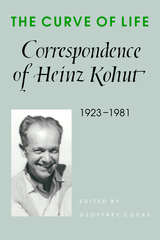 The Curve of Life: Correspondence of Heinz Kohut, 1923-1981
Heinz Kohut
University of Chicago Press, 1994 Psychoanalyst, teacher, and scholar, Heinz Kohut was one of this century's most important intellectuals. A rebel, according to many mainstream psychoanalysts, Kohut challenged Freudian orthodoxy and the medical control of psychoanalysis in America. His success in treating narcissistic disorders and his highly influential book How Does Analysis Cure? established Kohut's Self Psychology as the strongest rival to traditional psychoanalysis today.
The Curve of Life reveals Kohut's private and public life through a unique collection of lively and thoughtful correspondence with colleagues, public figures, family, and close friends. Over 300 never-before-published letters, drawn from Kohut's private files and from colleagues, cover Kohut's life from his native Austria in the 1930s until his death in 1981. Because many of his letters were so substantive, this rich collection clarifies Kohut's landmark published works. In letters to such diverse personalities as Anna Freud and Bruno Walter, Kohut meditated on some of the most intriguing psychoanalytic questions of the day—the nature of psychological cure, the relationship between doctor and patient, and the role of the Oedipus complex in psychoanalysis. The correspondence also reveals Kohut's lively interest in literature, music, history, and culture, as well as his deep and often contentious involvement in the politics of the psychoanalytic movement.
Kohut discussed his theories in letters to August Aichhorn, Heinz Hartmann, the Surgeon General, and even Jacqueline Kennedy, and the responses, some published here for the first time, prompted him to explore his ideas from a variety of perspectives. A letter from Anna Freud provoked Kohut to respond this way:
"What you had to say gave me great pleasure, and your approval was a welcome support amidst the inescapable insecurities under pressure to which we are all exposed. Strangely enough, it was not the discussion of scientific contributions and other statements that I had sent to you but the very last, parting sentence of your letter which gave me the most food for thought. You sent me your best wishes for the presidency of the American Psychoanalytic Association, and expressed the hope that '...this office permits opportunity for some revolutionary moves.'"
The Curve of Life illuminates the evolution of Kohut's theory of the psychology of the self, and provides a rare glimpse into the institutional and intellectual history of psychoanalysis in the last half of this century. These letters will fascinate not only scholars in psychoanalysis, but also those in the humanities, social sciences, and even theology, as well as general readers curious about the private thoughts of a towering figure in intellectual life.
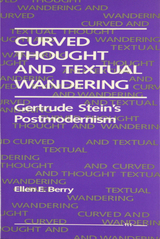 Curved Thought and Textual Wandering: Gertrude Stein's Postmodernism
Ellen E. Berry
University of Michigan Press, 1992 This wide-ranging and provocative study traces Gertrude Stein's production of avant-garde texts that radically disrupted traditional notions of how fiction should be defined, valued, and read. The book combines feminist and postmodern perspectives to illuminate new facets of Stein’s novels and to situate them within an expanded definition of the postmodern. The author argues that if we fail to consider the contexts within which postmodern innovations occur, and if we subsume all formal disruptions under a generalized postmodern mode, we obscure important differences among authors and distort the notion of the postmodern itself.The study expands our understanding of Stein as a novelist and a narrative theorist, repositions her work within a revised notion of literary history, and thus clarifies points of relation and divergence between modernism and postmodernism. It also assists in the historicizing of the postmodern literary emergence by insisting on the centrality of gender as a category of analysis. Finally, it argues for the importance of constructing definitions of postmodernism that will allow space to consider the complexity and diversity of its cultural practices. Curved Thought and Textual Wandering will be welcomed by scholars of modernism, of Gertrude Stein, and of feminist and narrative theory and postmodern culture.
Cusanus: A Legacy of Learned Ignorance
Peter J. Casarella
Catholic University of America Press, 2006 This volume offers a detailed historical background to Cusanus's thinking while also assaying his significance for the present. It brings together major contributions from the English-speaking world as well as voices from Europe.
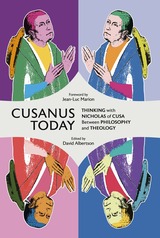 Cusanus Today: Thinking with Nicholas of Cusa Between Philosophy and Theology
David C. Albertson
Catholic University of America Press, 2024 At the end of the nineteenth century, German theologians and philosophers rediscovered the Renaissance cardinal Nicholas of Cusa (1401-1464). Immediately they hailed Cusanus as the first modern thinker, a brilliant German rival to the French Descartes. But since the founding of the Cusanus critical edition in 1927 up to its conclusion in 2005, historians have gradually learned that Nicholas was more of a medieval preacher and contemplative than a modern philosopher.
Yet over the same century, modern German and French readers were already digging into Nicholas’s many works. There they encountered an exciting voice with fresh perspectives about God’s immanence in the cosmos and the awesome capacities of the human mind. Leading philosophers and theologians from Erich Przywara to Karl Jaspers to Hans-Georg Gadamer, and from Gilles Deleuze to Jacques Lacan to Michel de Certeau, found their own thinking stimulated by the cardinal’s innovative concepts and interdisciplinary style. Even as Nicholas shifted from modern to medieval among historians, he was emerging as a contemporary interlocutor for moderns and postmoderns. Who could have guessed that the first debate between Jean-Luc Marion and Emmanuel Falque would take place over the fifteenth-century mystical dialogue, De
visione dei?
If Meister Eckhart found his moment amidst Deconstruction in prior decades, Nicholas of Cusa is our thinker for today. His interests anticipate themes in continental philosophy of religion, whether alterity, invisibility, the fold, or the icon. His habit of interweaving philosophy and theology anticipates current debates on the thresholds of phenomenology. Our volume first maps the contours of modern receptions of Nicholas of Cusa in French and German spheres, and then beyond Europe to the Americas and Japan. It also hosts the next round of engagement by some of today’s most original Christian thinkers: Emmanuel Falque, John Milbank, and David Bentley Hart.
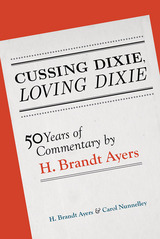 Cussing Dixie, Loving Dixie: Fifty Years of Commentary by H. Brandt Ayers
H. Brandt Ayers and Carol Nunnelley
University of Alabama Press, 2015 Cussing Dixie, Loving Dixie: Fifty Years of Commentary by H. Brandt Ayers collects in one volume the essential writing of the legendary publisher and editor of the Anniston Star.
The decades-long ribbon of prose that spilled from Ayers’s pen captured the epochal milestones of our times, such as the 1965 March on Washington, the civil rights movement, the rise and decay of the New South movement, the South’s transformation from a bulwark of Democratic entropy to a heartland of irascible conservatism, and the election of the republic’s first black president.
Cussing Dixie, Loving Dixie: Fifty Years of Commentary by H. Brandt Ayers includes Ayers’s unforgettable descriptions of the political giants of Alabama’s turbulent twentieth century. Of George Wallace he wrote: “He lost his way in the swamp of racial politics, squandered his great talent for leadership, and, cruelly, has made his most devoted followers bear the consequences.” And Ayers memorably hymned Supreme Court justice Hugo Black as having “made of the Bill of Rights a trumpet which kept calling the nation back to its original purpose.”
Ayers was so known for his passionate crusade for a fair deal for “the plain people of both races” of Alabama that enemies dubbed his family’s newspaper “The Red Star.” A loyal son of Alabama who extolls Southern culture, Ayers unapologetically calls for Alabamians to cast off the moribund ideologies of the past. He jousts against obscurantism itself: “When fear and ignorance snuff out the brains of a man,” he thunders, “he is reduced to the level of a jungle predator—a flexed mass of instincts.”
Writing from a generous heart, Ayers enlivens and enlightens. Eschewing the hifalutin, his artful writing is both accessible to the people and admired by the learned. Far from provincial, his far-ranging eye landed often on global events, and he persuasively frames the state and region as an active front on which key national issues hang.
Ayers ranks among the most prolific and insightful chroniclers of twentieth- and twenty-first-century Alabama. Cussing Dixie, Loving Dixie: Fifty Years of Commentary by H. Brandt Ayers is a monument to his enduring legacy and relevance.
Custer Legends
Lawrence Frost
University of Wisconsin Press, 1981 George Armstrong Custer rode at the head of his cavalry command where he made instantaneous decisions, most of which resulted in victory during the Civil War. The older officers over whom he had jumped in rank soon displayed their animosity. From them, and many others, a series of charges against him were circulated; from these grew the innumerable Custer legends. This volume includes many interesting and unusual Custer legends, which include the alleged fathering of Monahseetah’s Indian son; the Annie Jones story buried in the National Archives; Custer’s capture of Lee’s supply trains at Appomattox Court House that caused Lee to surrender—and much more.
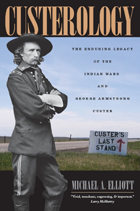 Custerology: The Enduring Legacy of the Indian Wars and George Armstrong Custer
Michael A. Elliott
University of Chicago Press, 2007 On a hot summer day in 1876, George Armstrong Custer led the Seventh Cavalry to the most famous defeat in U.S. military history. Outnumbered and exhausted, the Seventh Cavalry lost more than half of its 400 men, and every soldier under Custer’s direct command was killed.
It’s easy to understand why this tremendous defeat shocked the American public at the time. But with Custerology, Michael A. Elliott tackles the far more complicated question of why the battle still haunts the American imagination today. Weaving vivid historical accounts of Custer at Little Bighorn with contemporary commemorations that range from battle reenactments to the unfinished Crazy Horse memorial, Elliott reveals a Custer and a West whose legacies are still vigorously contested. He takes readers to each of the important places of Custer’s life, from his Civil War home in Michigan to the site of his famous demise, and introduces us to Native American activists, Park Service rangers, and devoted history buffs along the way. Elliott shows how Custer and the Indian Wars continue to be both a powerful symbol of America’s bloody past and a crucial key to understanding the nation’s multicultural present.
“[Elliott] is an approachable guide as he takes readers to battlefields where Custer fought American Indians . . . to the Michigan town of Monroe that Custer called home after he moved there at age 10 . . . to the Black Hills of South Dakota where Custer led an expedition that gave birth to a gold rush."—Steve Weinberg, Atlanta Journal-Constitution
“By ‘Custerology,’ Elliott means the historical interpretation and commemoration of Custer and the Indian Wars in which he fought not only by those who honor Custer but by those who celebrate the Native American resistance that defeated him. The purpose of this book is to show how Custer and the Little Bighorn can be and have been commemorated for such contradictory purposes.”—Library Journal
“Michael Elliott’s Custerology is vivid, trenchant, engrossing, and important. The American soldier George Armstrong Custer has been the subject of very nearly incessant debate for almost a century and a half, and the debate is multicultural, multinational, and multimedia. Mr. Elliott's book provides by far the best overview, and no one interested in the long-haired soldier whom the Indians called Son of the Morning Star can afford to miss it.”—Larry McMurtry
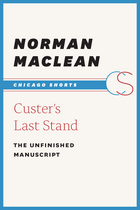 Custer's Last Stand: The Unfinished Manuscript
Norman Maclean
University of Chicago Press, 2008 In his eighty-seven years, Norman Maclean played many parts: fisherman, logger, firefighter, scholar, teacher. But it was a role he took up late in life, that of writer, that won him enduring fame and critical acclaim—as well as the devotion of readers worldwide. When he died in 1990, Maclean left behind an earlier unfinished project, on a topic that had held his attention for decades: General Custer and the Battle of the Little Bighorn. The portions of that writing that remain reveal a deep interest not only in the battle itself but also its afterlife—how historical events influence popular culture and how retellings revise the past. Summarizing the events from the various perspectives of the Americans, the Sioux, and the Cheyenne, Maclean explains why the battle lives on in our imagination. Custer’s “last stand” provides all the elements—the characters, the plot, and the backdrop—of the perfect dramatic tragedy. And the way we retell history, argues Maclean, is intimately tied to how we choose to memorialize defeat.
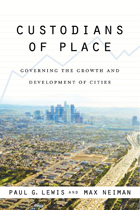 Custodians of Place: Governing the Growth and Development of Cities
Paul G. Lewis and Max Neiman
Georgetown University Press, 2009 Custodians of Place provides a new theoretical framework that accounts for how different types of cities arrive at decisions about residential growth and economic development. Lewis and Neiman surveyed officials in hundreds of California cities of all sizes and socioeconomic characteristics to account for differences in local development policies. This book shows city governments at the center of the action in shaping their destinies, frequently acting as far-sighted trustees of their communities. They explain how city governments often can insulate themselves for the better from short-term political pressures and craft policy that builds on past growth experiences and future vision. Findings also include how conditions on the ground—local commute times, housing affordability, composition of the local labor force—play an important role in determining the approach a city takes toward growth and land use.
What types of cities tend to aggressively pursue industrial or retail firms? What types of cities tend to favor housing over business development? What motivates cities to try to slow residential growth? Custodians of Place answers these and many other questions.
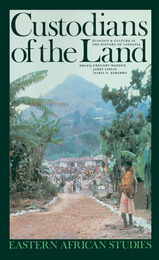 Custodians of the Land: Ecology and Culture in the History of Tanzania
Gregory H. Maddox
Ohio University Press, 1995 Farming and pastoral societies inhabit ever-changing environments. This relationship between environment and rural culture, politics and economy in Tanzania is the subject of this volume which will be valuable in reopening debates on Tanzanian history.
In his conclusion, Isaria N. Kimambo, a founding father of Tanzanian history, reflects on the efforts of successive historians to strike a balance between external causes of change and local initiative in their interpretations of Tanzanian history.
He shows that nationalist and Marxist historians of Tanzanian history, understandably preoccupied through the first quarter-century of the country's post-colonial history with the impact of imperialism and capitalism on East Africa, tended to overlook the initiatives taken by rural societies to transform themselves.
Yet there is good reason for historians to think about the causes of change and innovation in the rural communities of Tanzania, because farming and pastoral people have constantly changed as they adjusted to shifting environmental conditions.
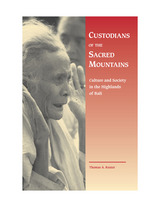 Custodians of the Sacred Mountains: Culture and Society in the Highlands of Bali
Thomas Reuter
University of Hawaii Press, 2002 Custodians of the Sacred Mountains is the first comprehensive ethnography of the Bali Aga, a large ethnic minority that occupies the island's central highlands. The Bali Aga are popularly viewed as the indigenous counterparts to other Balinese who trace their origin to invaders from the Javanese kingdom of Majapait, who have ruled Bali from the fourteenth century A.D. Although Bali remains one of the most intensely researched localities in the world, the Bali Aga have long been overshadowed by the more exotic courtly culture of the south.
A closer analysis of the changing position of the Bali Aga within Balinese society provides a key to understanding the politics and social process of cultural representation in Bali and beyond. The process is marked by a blend of representational competition and cooperation among the Bali Aga themselves, among the Bali Aga and southern Balinese, and later among the island's aristocratic elites and foreign colonizers or scholars, and state authorities. The study of this process raises important issues about the establishment and maintenance of status and power structures at regional, national, and global levels.
Custodians of the Sacred Mountains explores the marginalization of the Bali Aga in light of a critical theory of cultural representation and calls for a morally engaged approach to ethnographic research. It proposes an intersubjective and communicative model of human interaction as the foundation for understanding the relative significance of cooperation and competition in the cultural production of knowledge.
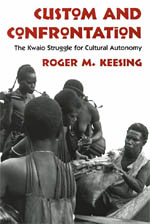 Custom and Confrontation: The Kwaio Struggle for Cultural Autonomy
Roger M. Keesing
University of Chicago Press, 1992 "Anthropologists and students of anthropology may read this book because it is a superior ethnography, detailed and enriched by theoretical insights. But at the heart of this book is a moral take, a simple but powerful story about an indigenous people who were wronged, who resisted for more than 100 years, and who may yet prevail. This message, ultimately, lends the book its true meaning and value."—William Rodman, Anthropologica
"A major contribution to the ethnography and history of Malaita and Melanesia, and to the growing literature on cultural resistance. But above all, his humane and painful analysis of the meeting of peoples living in different worlds and constructing their agendas and moralities on incommensurate—and apparently equally arbitrary—principles, represents a major contribution and challenge to anthropological thought, addressing the basic issue of what it is to be human."—Fredrik Barth
The Customary of the Shrine of St. Thomas Becket at Canterbury Cathedral: Latin Text and Translation
John Jenkins
Arc Humanities Press, 2022 The shrine of St Thomas Becket at Canterbury Cathedral was one of the most popular pilgrim destinations in medieval Europe, as well as the focal point for the liturgy of the cathedral’s monastic community. In 1428 the keepers of the shrine composed a customary detailing its day-to-day operation, including the opening hours, decoration, maintenance, and staffing. This unique survival offers a rare glimpse into the realities of organizing a pilgrimage site in a major medieval church, and the Latin text with facing English translation is provided for the first time. A comprehensive introduction and extensive notes set the Customary within the context of the cathedral, its liturgy, and pilgrim practice more widely.
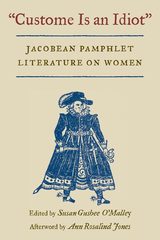 Custome Is an Idiot: JACOBEAN PAMPHLET LITERATURE ON WOMEN
Edited by Susan Gushee O'Malley
University of Illinois Press, 2004 Containing the complete and annotated texts of six pamphlets written between 1609 and 1620, "Custome Is an Idiot" makes an invaluable contribution to the scholarship on early modern British cultural history, specifically on competing opinions about the role of women in society.
During the early seventeenth century a fierce debate raged in British intellectual society regarding the role of women, how much is ordained by God, and how much is merely custom. The pamphlets that circulated at the time reveal a great deal about the terms of the debate, and these six constitute a significant body of primary literature, allowing the contending voices to be heard anew.
Included here are two pamphlets about gossips by Samuel Rowlands, William Heale's treatise against wife-beating, Christopher Newstead's argument for the superiority of women, and Hic Mulier and Haec Vir, two pamphlets that address the theme of cross-dressing. Introductions by Susan Gushee O'Malley place each pamphlet in a wider context, and detailed annotations shed light on the individual texts.
 Customizing Islamic Law: Matrilineal Muslims of the Indian Ocean
Mahmood Kooria
Amsterdam University Press, 2025 Millions of Muslims across the Indian Ocean littoral have historically followed a matrilineal system, where women had better economic and social stability and an upper hand in their personal choices. The system raised serious questions as the Islamic legal tradition evolved in the Middle East, especially when some inheritance customs gave men little to no share in the property. Bringing diverse matrilineal Muslim communities together for the first time, this volume studies their engagements against the patriarchal interpretations of Sharia in comparative and connected perspectives. The comparisons and connections go beyond the Indian Ocean and Islamic world, to the Mediterranean, Sub-Saharan and North African contexts as well as to the Christian, Jewish and Hindu traditions. The contributors explore how and why the followers of the matrilineal praxis defended the system within the legal epistemologies of their religion.
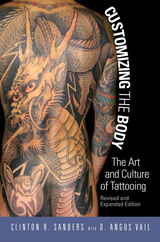 Customizing the Body: The Art and Culture of Tattooing
Clinton Sanders
Temple University Press, 2008 Originally published in 1989, this ground-breaking ethnographic exploration of tattooing—and the art world surrounding it—covers the history, anthropology and sociology of body modification practices; the occupational experience of the tattooist; the process and social consequences of becoming a tattooed person; and the prospects of "serious" tattooing becoming an accepted art form. Curiously, despite the greater prevalence of tattoos and body modification in today’s society, there is still a stigma of deviance associated with people who get or ink tattoos. Retaining the core of the original book, this revised and expanded edition offers a new preface by the author and a new chapter focusing on the changes that have occurred in the tattoo world. A section on the new scholarly literature that has emerged, as well as the new modes of body modification that have come into vogue are included along with a new gallery of photographs that shows some splendid examples of contemporary tattoo art. A directory of artists' websites invites readers to discover the range of work being done around the world—from “suits” (full body tattoos) to skulls.
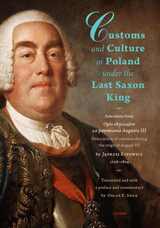 Customs and Culture in Poland under the Last Saxon King: Selections from Opis obyczajów za panowania Augusta III by father Jedrzej Kitowicz, 1728-1804
Translated and with a preface and commentary by Oscar E. Swan
Central European University Press, 2019 Jedrzej Kitowicz was a parish priest in central Poland with a military and worldly past. In his later years, after putting the affairs of his parish in order, he composed a colorful chronicle of all aspects and walks of life under King August III. He seems to have written mostly from memory, creating in the process the most complete record that exists of society in eighteenth-century Poland. A man with omnivorous tastes, a keen sense of observation, and a wry—at times bawdy—sense of humor, Kitowicz’s realistic and robust literary technique has been compared in its earthiness and evocativeness to Flemish genre painting. A noteworthy example of eighteenth-century writing and narrative talent, his Opis reveals an astounding visual memory and a modern ethnographer’s eye for material culture. The present book consists of fifty-one chapters, including all of the most celebrated ones, from Father Kitowicz’s Opis, complete with a comprehensive introduction. Topics include religious beliefs, customs and institutions, child-rearing, education, the judiciary and the military. Particularly vivid are the descriptions of the lives of the nobility, ranging from cooking through men’s and women’s wear to household entertainments and drinking habits. A commentary by the editor introduces each chapter.
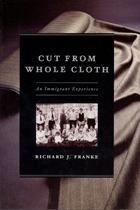 Cut from Whole Cloth: An Immigrant Experience
Richard J. Franke
University of Chicago Press, 2004 Accomplished businessman Richard J. Franke offers in Cut from Whole Cloth an intimate account of the American immigrant experience, recounting the moving story of his grandparents' struggle to build a new life in turn-of-the-century America.
Franke draws on extensive primary sources to create an engrossing narrative of his Catholic grandfather and Lutheran grandmother as they flee religious intolerance and economic adversity in Germany and immigrate to America in 1884. They settle in Springfield, Illinois, where they start a family and business and live out the American dream—with its attendant perils and promises—as their business evolves from a tailor's shop to a modern, thriving dry cleaner. Their story is one of strife, frustration, and success. Franke chronicles how they struggle to raise a family in a foreign culture with radically different values, as the old world morals that fuel their prosperity give rise to ancient family tensions that haunt each new generation.
By turns charming, wrenching, and poetic, Cut from Whole Cloth is an intensely personal yet timeless tale that will appeal to nearly every descendant of immigrants.
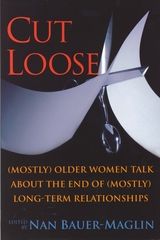 CUT LOOSE: (Mostly) Older Women on the End of their (Mostly) Long-Term Relationships
Bauer-Maglin, Nan
Rutgers University Press, 2006 Although breakups—whether celebrity or everyday—are a constant source of fascination, surprisingly little attention has been given to women who are cut loose in their later years. This is a book about (mostly) long-term relationships that have come apart. Each woman involved, the majority of whom are over sixty, tells of her experience through journal entries, essays, poetry, or stories. Although in many senses they have been abandoned, they have also been set free, untethered, and, for some, liberated sexually, mentally, or emotionally. The book is divided into two major sections. The pieces in the first part are personal narratives. Among the varied voices, we hear from women in both heterosexual and same-sex relationships who have been left by their partners or who have decided to leave them. In the second section, the contributors look at being left and leaving from psychological, sociological, economic, sexual, medical, anthropological, and literary perspectives. Other essays explore the shared experiences of specific classes of women, such as single women, widows, or abandoned daughters.
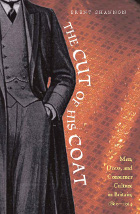 The Cut of His Coat: Men, Dress, and Consumer Culture in Britain, 1860–1914
Brent Shannon
Ohio University Press, 2006 The English middle class in the late nineteenth century enjoyed an increase in the availability and variety of material goods. With that, the visual markers of class membership and manly behavior underwent a radical change. In The Cut of His Coat: Men, Dress, and Consumer Culture in Britain, 1860–1914, Brent Shannon examines familiar novels by authors such as George Eliot, Anthony Trollope, Thomas Hughes, and H. G. Wells, as well as previously unexamined etiquette manuals, period advertisements, and fashion monthlies, to trace how new ideologies emerged as mass-produced clothes, sartorial markers, and consumer culture began to change. While Victorian literature traditionally portrayed women as having sole control of class representations through dress and manners, Shannon argues that middle-class men participated vigorously in fashion. Public displays of their newly acquired mannerisms, hairstyles, clothing, and consumer goods redefined masculinity and class status for the Victorian era and beyond. The Cut of His Coat probes the Victorian disavowal of men’s interest in fashion and shopping to recover men’s significant role in the representation of class through self-presentation and consumer practices.
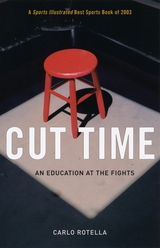 Cut Time: An Education at the Fights
Carlo Rotella
University of Chicago Press, 2005 "Boxing is not just fighting," writes Carlo Rotella. "It is also training and living right and preparing to go the distance in the broadest sense of the phrase, a relentless managing of self that anyone who gets truly old must learn." Rotella's Cut Time chronicles his immersion in the fight world, from the brutal classroom of the gym to the spectacle of fight night. An award-winning writer and ringside veteran, Rotella unearths the hidden wisdom in any kind of fight, from barroom brawl to HBO extravaganza.
Tracing the consequences of hurt and craft, the two central facts of boxing, Rotella reveals moving resonances between the worlds inside and outside the ropes. The brief, disastrous fistic career of one of his students pinpoints the moment when adulthood arrives; the hard-won insight of a fellow fan shows Rotella how to reckon with a car crash. Mismatches, resilience, pride, pain, and aging—Rotella's lessons from the ring extend far beyond the sport. In Cut Time, Rotella achieves the near-impossible: he makes the fight world relevant to us, whether we're fans or not.
"Cut Time should be read not just by fight aficionados but also by fans of intelligent nonfiction writing. . . . An absorbing read."—Sports Illustrated
"Just when you think it's all been written, a good writer takes a shining new look at an old subject and breathes life into it. . . . Rotella has preserved the blow-by-blow and the grandeur of another age but has somehow expanded the ring to include his own generation's proclivities and sensibility."—Los Angeles Times
Cutlish
Rajiv Mohabir
Four Way Books, 2021 In Cutlish, a title referencing the rural recasting of the cutlass or machete, Rajiv Mohabir creates a form migrated from Caribbean chutney music in order to verse the precarity of a queer Indo-Caribbean speaker in the newest context of the United States. By joining the disparate threads of his fading, often derided, multilingual Guyanese Creole and Guyanese Bhojpuri linguistic inheritances, Mohabir mingles the ghosts that haunt from the cane fields his ancestors worked with the canonical colonial education of his elders, creating a new syncretic American poetry — pushing through the “post” of postcolonial, the “poet” in the poetic.
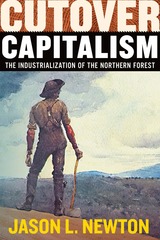 Cutover Capitalism: The Industrialization of the Northern Forest
Jason L. Newton
West Virginia University Press, 2024 2024 George Perkins Marsh Prize Runner-up
What happened to the loggers of America’s past when lumbermen moved west and south in the late nineteenth and early twentieth centuries? How did these communities continue to create value and meaning in these marginal lands? Cutover Capitalism: The Industrialization of the Northern Forest provides a new perspective on the process of industrialization in America through the study of rural workers in a cutover landscape.
Back when resources started running scarce, the environment of the forest and bodies of workers became the natural resources from which mills and landowners extracted. Bodies and cutover landscapes were mobilized in new ways to increase the scale and efficiency of production—a brutal process for workers, human and animal alike. In the Northern Forest, an industrial working class formed in relation to the unique ways that workers' bodies were used to produce value and in relation to the seasonal cycles of the forest environment.
Cutover Capitalism is an innovative historical study that combines methodological approaches from labor history, environmental history, and the new history of capitalism. The book tells a character-driven yet theoretically sophisticated story about what it was like to live through this process of industrialization.
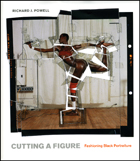 Cutting a Figure: Fashioning Black Portraiture
Richard J. Powell
University of Chicago Press, 2009 Examining portraits of black people over the past two centuries, Cutting a Figure argues that these images should be viewed as a distinct category of portraiture that differs significantly from depictions of people with other racial and ethnic backgrounds. The difference, Richard Powell contends, lies in the social capital that stems directly from the black subject’s power to subvert dominant racist representations by evincing such traits as self-composure, self-adornment, and self-imagining.
Powell forcefully supports this argument with evidence drawn from a survey of nineteenth-century portraits, in-depth case studies of the postwar fashion model Donyale Luna and the contemporary portraitist Barkley L. Hendricks, and insightful analyses of images created since the late 1970s. Along the way, he discusses major artists—such as Frédéric Bazille, John Singer Sargent, James Van Der Zee, and David Hammons—alongside such overlooked producers of black visual culture as the Tonka and Nike corporations. Combining previously unpublished images with scrupulous archival research, Cutting a Figure illuminates the ideological nature of the genre and the centrality of race and cultural identity in understanding modern and contemporary portraiture.
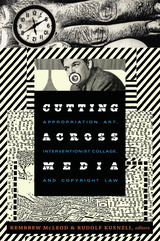 Cutting Across Media: Appropriation Art, Interventionist Collage, and Copyright Law
Kembrew McLeod and Rudolf Kuenzli, eds.
Duke University Press, 2011 In this collection of essays, leading academics, critics, and artists historicize collage and appropriation tactics that cut across diverse media and genres. They take up issues of appropriation in the popular and the avant-garde, in altered billboards and the work of the renowned painter Chris Ofili, in hip-hop and the compositions of Béla Bartók and Zoltán Kodály, and in audio mash-ups, remixed news broadcasts, pranks, culture jamming, and numerous other cultural forms. The borrowing practices that they consider often run afoul of intellectual property regimes, and many of the contributors address the effects of copyright and trademark law on creativity. Among the contributors are the novelist and essayist Jonathan Lethem, the poet and cultural critic Joshua Clover, the filmmaker Craig Baldwin, the hip-hop historian Jeff Chang, the ’zine-maker and sound collage artist Lloyd Dunn, and Negativland, the infamous collective that was sued in 1991 for sampling U2 in a satirical sound collage. Cutting Across Media is both a serious examination of collage and appropriation practices and a celebration of their transformative political and cultural possibilities. Contributors. Craig Baldwin, David Banash, Marcus Boon, Jeff Chang, Joshua Clover, Lorraine Morales Cox, Lloyd Dunn, Philo T. Farnsworth, Pierre Joris, Douglas Kahn, Rudolf Kuenzli, Rob Latham, Jonathan Lethem, Carrie McLaren, Kembrew McLeod, Negativland, Davis Schneiderman, David Tetzlaff, Gábor Vályi, Warner Special Products, Eva Hemmungs Wirtén
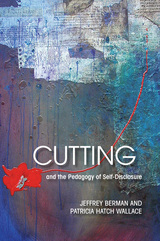 Cutting and the Pedagogy of Self-Disclosure
Jeffrey Berman
University of Massachusetts Press, 2007 Cutting, a form of self-mutilation, is a growing problem in the United States, especially among adolescent females. It is regarded as self-destructive behavior, yet paradoxically, people who cut themselves generally do not wish to die but to find relief from unbearable psychological pain.
Cutting and the Pedagogy of Self-Disclosure is the first book to explore how college students write about their experiences as cutters. The idea behind the book arose when Patricia Hatch Wallace, a high school English teacher, wrote a reader-response diary for a graduate course taught by Professor Jeffrey Berman in which she revealed for the first time that she had cut herself twenty years earlier. At Berman's suggestion, Wallace wrote her Master's thesis on cutting. Not long after she finished her thesis, two students in Berman's expository writing course revealed their own experiences as cutters. Their disclosures encouraged several students in another writing class to share their own cutting stories with classmates. Realizing that so many students were writing about the same phenomenon, Berman and Wallace decided to write a book about a subject that is rarely discussed inside or outside the classroom.
In Part 1, Wallace discusses clinical and theoretical aspects of cutting and then applies these insights to several memoirs and novels, including Susanna Kaysen's Girl, Interrupted, Caroline Kettlewell's Skin Game, and Patricia McCormick's Cut. The motivation behind Wallace's research was the desire to learn more about herself, and she reads these stories through her own experience as a cutter. In Part 2, Berman focuses on the pedagogical dynamics of cutting: how undergraduate students write about cutting, how their writings affect classmates and teachers, and how students who cut themselves can educate everyone in the classroom about a problem that has personal, psychological, cultural, and educational significance.
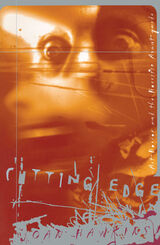 Cutting Edge: Art-Horror and the Horrific Avant-garde
Joan Hawkins
University of Minnesota Press, 2000 Explores what horror movies tell us about issues of taste. Even before Jean-Luc Godard and other members of the French New Wave championed Hollywood B movies, aesthetes and cineasts relished the raw emotions of genre films. This contradiction has been particularly true of horror cinema, in which the same images and themes found in exploitation and splatter movies are also found in avant-garde and experimental films, blurring boundaries of taste and calling into question traditional distinctions between high and low culture. In Cutting Edge, Joan Hawkins offers an original and provocative discussion of taste, trash aesthetics, and avant-garde culture of the 1960s and 1970s to reveal horror’s subversiveness as a genre. In her treatment of what she terms "art-horror" films, Hawkins examines home viewing, video collection catalogs, and fanzines for insights into what draws audiences to transgressive films. Cutting Edge provides the first extended political critique of Yoko Ono’s rarely seen Rape and shows how a film such as Franju’s Eyes without a Face can work simultaneously as an art, political, and splatter film. The rediscovery of Tod Browning’s Freaks as an art film, the "eurotrash" cinema of Jess Franco, camp cults like the one around Maria Montez, and the "cross-over" reception of Andy Warhol’s Frankenstein are all studied for what they reveal about cultural hierarchies. Looking at the low aspects of high culture and the high aspects of low culture, Hawkins scrutinizes the privilege habitually accorded "high" art-a tendency, she argues, that lets highbrow culture off the hook and removes it from the kinds of ethical and critical social discussions that have plagued horror and porn. Full of unexpected insights, Cutting Edge calls for a rethinking of high/low distinctions-and a reassigning of labels at the video store.
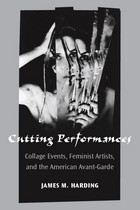 Cutting Performances: Collage Events, Feminist Artists, and the American Avant-Garde
James M. Harding
University of Michigan Press, 2012 "A thoughtful and engaging contribution to the field that will have a sustained and lasting impact on the way feminist performance is defined and understood, as well as on how feminist histories and historiographies continue to challenge and transform the larger field of performance."
---Charlotte Canning, The University of Texas at Austin "Harding forcefully challenges and destabilizes the male-centered Eurocentric genealogy of the avant-garde, which he claims is an uncontested, linear, positivistic history, unproblematized by theory. Then he argues that this gendered biased version of the European avant-garde is carried over into American historiography . . . A forceful case for a revisionist history."
---Daniel Gerould, The City University of New York Graduate Center Cutting Performances challenges four decades' worth of scholarship on the American avant-garde by offering a provocative reconceptualization of the history of avant-garde performance along feminist lines. Focusing on five women artists (Elsa von Freytag-Loringhoven, Gertrude Stein, Yoko Ono, Carolee Schneemann, and Valerie Solanas) whose performance aesthetics made prominent use of collage techniques, James M. Harding sheds light on the cultural history of the avant-garde and the role that experimental women artists played in that history. He investigates the prominent position that collage technique occupied within the artists' performance aesthetic, and the decisively feminist inflection that their work gives to collage as a mode of avant-garde expression. The radical juxtapositions in their works produce the powerful effects of making the familiar strange and establishing contexts from which new understandings may emerge. Harding examines the performative dimensions of collage in experimental, feminist redefinitions of the literary, graphic, and theatrical arts, filling a void in a scholarly discourse that, while ostensibly about the vanguard, has lagged well behind other significant theoretical and historiographical currents. Cutting Performances not only challenges assumptions that have governed scholarship on the American avant-garde but also establishes a context to rethink the history of American avant-garde performance along feminist lines. It will appeal to audiences interested in theater history and performance studies as well as those interested in the cultural history of the avant-garde and the role that feminist experimental artists have played in it. James M. Harding is Professor of English at the University of Mary Washington. His other books include Not the Other Avant-Garde: Transnational Foundations of Avant-Garde Performance (with John Rouse); Restaging the Sixties: Radical Theaters and Their Legacies (with Cindy Rosenthal); and Contours of the Theatrical Avant-Garde: Performance and Textuality. Illustration: Carolee Schneemann in Eye Body-36 Transformative Actions (1963) Action for camera (Photograph by Erró). Reproduced by permission of Carolee Schneemann.
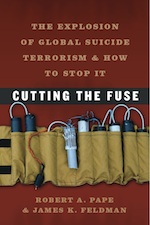 Cutting the Fuse: The Explosion of Global Suicide Terrorism and How to Stop It
Robert A. Pape and James K. Feldman
University of Chicago Press, 2012 Cutting the Fuse offers a wealth of new knowledge about the origins of suicide terrorism and strategies to stop it. Robert A. Pape and James K. Feldman have examined every suicide terrorist attack worldwide from 1980 to 2009, and the insights they have gleaned from that data fundamentally challenge how we understand the root causes of terrorist campaigns today—and reveal why the War on Terror has been ultimately counterproductive. Through a close analysis of suicide campaigns by Al Qaeda and other terrorist organizations in Iraq, Afghanistan, Pakistan, Lebanon, Israel, Chechnya, and Sri Lanka, the authors provide powerful new evidence that, contrary to popular and dangerously mistaken belief, only a tiny minority of these attacks are motivated solely by religion. Instead, the root cause is foreign military occupation, which triggers secular and religious people alike to carry out suicide attacks. Cutting the Fuse calls for new, effective solutions that America and its allies can sustain for decades, relying less on ground troops in Muslim countries and more on offshore, over-the-horizon military forces along with political and economic strategies that empower local communities to stop terrorists in their midst.
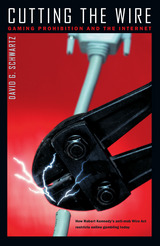 Cutting The Wire: Gaming Prohibition And The Internet
David G. Schwartz
University of Nevada Press, 2005 The story of the Wire Act and how Robert Kennedy’s crusade against the Mob is creating a new generation of Internet gaming outlaws.Gambling has been part of American life since long before the existence of the nation, but Americans have always been ambivalent about it. What David Schwartz calls the “pell-mell history of legal gaming in the United States” is a testament to our paradoxical desire both to gamble and to control gambling. It is in this context that Schwartz examines the history of the Wire Act, passed in 1961 as part of Attorney General Robert F. Kennedy’s crusade against organized crime and given new life in recent efforts to control Internet gambling. Cutting the Wire presents the story of how this law first developed, how it helped fight a war against organized crime, and how it is being used today. The Wire Act achieved new significance with the development of the Internet in the early 1990s and the growing popularity of online wagering through offshore facilities. The United States government has invoked the Wire Act in a vain effort to control gambling within its borders, at a time when online sports betting is soaring in popularity. By placing the Wire Act into the larger context of Americans’ continuing ambivalence about gambling, Schwartz has produced a provocative analysis of a national habit and the vexing predicaments that derive from it. In America today, 48 of 50 states currently permit some kind of legal gambling. Schwartz’s historical unraveling of the Wire Act exposes the illogic of an outdated law intended to stifle organized crime being used to set national policy on Internet gaming. Cutting the Wire carefully dissects two centuries of American attempts to balance public interest with the technology of gambling. Available in hardcover and paperback.
CW-21 Interceptor
Edwin Hoogschagen
Amsterdam University Press, 2023 The CW-21 was designed during the late 1930s. It combined light weight construction with a powerful engine, which resulted in an excellent rate of climb and manoeuvrability, allowing the fighter to quickly reach the height of attacking enemy aircraft, and attack them. The prototype was sent to China as a demonstration copy and an order for three aircraft, plus a further 32 as kits, followed. These would be assembled locally. Only the three production machines arrived in the chaos of war and would never see actual combat. A second modified variant was ordered by the Dutch government and 24 were delivered to the Netherlands Indies. The CW-21s were outnumbered and outgunned when the Japanese launched their attack on the Netherlands Indies. Despite the poor outlook, the pilots flying them put up a good fight...
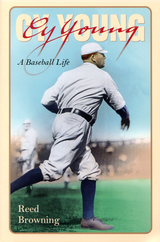 Cy Young: A Baseball Life
Reed Browning
University of Massachusetts Press, 2000 He was the winner of 511 major league baseball games, nearly a hundred more than any other pitcher. He threw three no-hitters, including the first perfect game in the new American League. He was among the original twelve players inducted into baseball's Hall of Fame, and his name is now attached to the game's most prestigious pitching award. Yet for all his accomplishments, Cy Young remains to most baseball fans a legendary but little known figure.
In this book, Reed Browning re-creates the life of Denton True "Cyclone" Young and places his story in the context of a rapidly changing turn-of-the-century America. Born in rural Ohio, the son of a Civil War veteran, Young learned his trade at a time when only underhand pitching was permitted. When he began his professional career in 1890, pitchers wore no gloves and stood five feet closer to the batter than they do today. By the time he retired in 1911, the game of baseball had evolved into its modern form and claimed unquestioned status as America's "national pastime."
As Browning shows, Young's extraordinary mastery of his craft owed much to his ability to adapt to the changing nature of the game. Endowed with an exceptional fastball, he gradually developed a wide array of deliveries and pitches—all of which he could throw with astonishing control. Yet his success can also be attributed, at least in part, to the rustic values of loyalty, hard work, and fair play that he embraced and embodied, and for which he became renowned among baseball fans of his day.
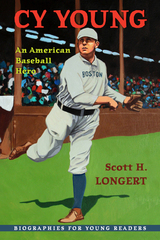 Cy Young: An American Baseball Hero
Scott H. Longert
Ohio University Press, 2020 Cy Young was one of the hardest-throwing pitchers of all time. He recorded three no-hitters—including a perfect game—and accumulated more than 2,800 strikeouts on his way to the National Baseball Hall of Fame. Scott H. Longert uses Young’s life story to introduce middle-grade readers to the game, explaining balls, strikes, and outs in an easy-to-understand way. Longert narrates each season and each milestone game with an enthusiastic play-by-play that is sure to draw readers into the excitement on the field and in the crowd, fostering a better understanding of and a passion for baseball. Baseball fans today know Cy Young’s name chiefly through the award given in his honor each year to the best pitcher in the National and the American Leagues. Denton True “Cyclone” Young won more than five hundred games over a career that spanned four decades, a record that no other major league pitcher has come close to matching. In addition to being the winningest pitcher in baseball history, he was also a kind, self-effacing, and generous man. Born into a farm family in rural Ohio, he never lost touch with the small-town values he grew up with.
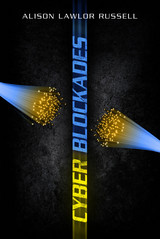 Cyber Blockades
Alison Lawlor Russell
Georgetown University Press, 2014 Cyber Blockades is the first book to examine the phenomena of blockade operations in cyberspace, large-scale attacks on infrastructure or systems that aim to prevent an entire state from sending or receiving electronic data. Cyber blockades can take place through digital, physical, and/or electromagnetic means. Blockade operations have historically been considered acts of war, thus their emergence in cyberspace has significant implications for international law and for our understanding of cyber warfare. The author defines and explains the emerging concept of “cyber blockades” and presents a unique comparison of blockade operations in five different domains—on land, at sea, in the air, in space, and in cyberspace—identifying common elements as well as important distinctions. Alison Lawlor Russell’s framework for defining cyber blockades, understanding how they occur, and considering the motivations of actors who employ them is applied with in-depth analysis of the cyber attacks on Estonia in 2007 and on Georgia during the 2008 Georgia-Russia War. Blockade operations have occurred in cyberspace and will doubtlessly be used again in the future, by both state and non-state actors alike, because of the unique advantages of this type of attack. This book offers recommendations for policymakers contemplating or confronted by such attacks. Cyber Blockades is also a must-read for scholars and students of security studies, terrorism, substate groups, and the future of warfare.
Cyber Security for Microgrids
Subham Sahoo
The Institution of Engineering and Technology, 2022 Microgrids use ICT to intelligently deliver energy and integrate clean generation. They can operate independently from a larger grid and can help to strengthen grid resilience. Applications include remote as well as urban areas, hospitals, and manufacturing complexes. Cybersecurity challenges arise, exposing the microgrids to cyber-attacks, possibly resulting in harm to infrastructure and to people. Research has classified attacks based on confidentiality, integrity, and availability, and most countermeasures focus on specific attacks or on protecting specific components. A global approach is needed combining solutions that can secure the entire system and respond in milliseconds.
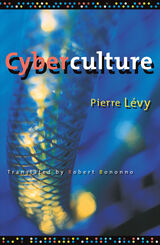 Cyberculture
Pierre Levy
University of Minnesota Press, 2001 A clear explanation and provocative look at the impact of new technologies on world society. Needing guidance and seeking insight, the Council of Europe approached Pierre Lévy, one of the world’s most important and well-respected theorists of digital culture, for a report on the state (and, frankly, the nature) of cyberspace. The result is this extraordinary document, a perfectly lucid and accessible description of cyberspace—from infrastructure to practical applications-along with an inspired, far-reaching exploration of its ramifications. A window on the digital world for the technologically timid, the book also offers a brilliant vision of the philosophical and social realities and possibilities of cyberspace for the adept and novice alike. In an overview, Lévy discusses the distinguishing features of cyberspace and cyberculture from anthropological, philosophical, cultural, and sociological points of view. An optimist about the future potential of cyberspace, he eloquently argues that technology—and specifically the infrastructure of cyberspace, the Internet—can have a transformative effect on global society. Some of the issues he takes up are new art forms; changes in relationships to knowledge, education, and training; the preservation of linguistic and cultural differences; the emergence and implications of collective intelligence; the problems of social exclusion; and the impact of new technology on the city and democracy in general. In considerable detail, Lévy describes the ways in which cyberspace will help promote the growth of democracy, primarily through the participation of individuals or groups. His analysis is enlivened by his own personal impressions of cyberculture—garnered from bulletin boards, mailing lists, virtual reality demonstrations, and simulations. Immediate in its details, visionary in its scope, deeply informed yet free of unnecessary technical language, Cyberculture is the book we require in our digital age.
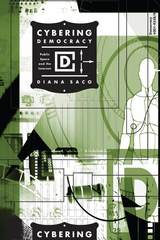 Cybering Democracy: Public Space And The Internet
Diana Saco
University of Minnesota Press, 2002 Reconceptualizes the relationship between participatory democracy, technology, and space The Internet has been billed by some proponents as an "electronic agora" ushering in a "new Athenian age of democracy." That assertion assumes that cyberspace’s virtual environment is compatible with democratic practice. But the anonymous sociality that is intrinsic to the Internet seems at odds with theories of democracy that presuppose the possibility, at least, of face-to-face meetings among citizens. The Internet, then, raises provocative questions about democratic participation: Must the public sphere exist as a physical space? Does citizenship require a bodily presence? In Cybering Democracy, Diana Saco boldly reconceptualizes the relationship between democratic participation and spatial realities both actual and virtual. She argues that cyberspace must be viewed as a produced social space, one that fruitfully confounds the ordering conventions of our physical spaces. Within this innovative framework, Saco investigates recent and ongoing debates over cryptography, hacking, privacy, national security, information control, and Internet culture, focusing on how different online practices have shaped this particular social space. In the process, she highlights fundamental issues about the significance of corporeality in the development of civic-mindedness, the exercise of citizenship, and the politics of collective action.
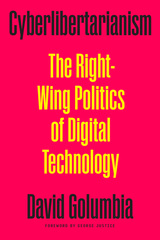 Cyberlibertarianism: The Right-Wing Politics of Digital Technology
David Golumbia
University of Minnesota Press, 2024 An urgent reckoning with digital technology’s fundamentally right-wing legal and economic underpinnings
In a timely challenge to the potent political role of digital technology, Cyberlibertarianism argues that right-wing ideology was built into both the technical and social construction of the digital world from the start. Leveraging more than a decade of research, David Golumbia traces how digital evangelism has driven the worldwide shift toward the political right, concealing inequality, xenophobia, dishonesty, and massive corporate concentrations of wealth and power beneath the utopian presumption of digital technology as an inherent social good. Providing an incisive critique of the push for open access and open-source software and the legal battles over online censorship and net neutrality, Cyberlibertarianism details how the purportedly democratic internet has been employed as an organizing tool for terror and hate groups and political disinformation campaigns. As he unpacks our naively utopian conception of the digital world, Golumbia highlights technology’s role in the advancement of hyperindividualist and antigovernment agendas, demonstrating how Silicon Valley corporations and right-wing economists; antiestablishment figures such as Julian Assange, Elon Musk, Peter Thiel, Edward Snowden, and Mark Zuckerberg; and seemingly positive voices such as John Perry Barlow, Cory Doctorow, the Electronic Freedom Foundation, and Wikipedia all have worked to hamper regulation and weaken legal safeguards against exploitation. Drawing from a wide range of thought in digital theory, economics, law, and political philosophy as well as detailed research and Golumbia’s own experience as a software developer, Cyberlibertarianism serves as a clarion call to reevaluate the fraught politics of the internet. In the hope of providing a way of working toward a more genuinely democratic and egalitarian future for digital technology, this magisterial work insists that we must first understand the veiled dogmas from which it has been constructed. Retail e-book files for this title are screen-reader friendly.
 Cyber-Marx: Cycles and Circuits of Struggle in High Technology Capitalism
Nick Dyer-Witheford
University of Illinois Press, 1999 In this highly readable and thought-provoking work, Nick Dyer-Witheford assesses the relevance of Marxism in our time and demonstrates how the information age, far from transcending the historic conflict between capital and its laboring subjects, constitutes the latest battleground in their encounter.
Dyer-Witheford maps the dynamics of modern capitalism, showing how capital depends for its operations not just on exploitation in the immediate workplace, but on the continuous integration of a whole series of social sites and activities, from public health and maternity to natural resource allocation and the geographical reorganization of labor power. He also shows how these sites and activities may become focal points of subversion and insurgency, as new means of communication vital for the smooth flow of capital also permit otherwise isolated and dispersed points of resistance to connect and combine with one another.
Cutting through the smokescreen of high-tech propaganda, Dyer-Witheford predicts the advent of a reinvented, "autonomist" Marxism that will rediscover the possibility of a collective, communist transformation of society. Refuting the utopian promises of the information revolution, he discloses the real potentialities for a new social order in the form of a twenty-first-century communism based on the common sharing of wealth.
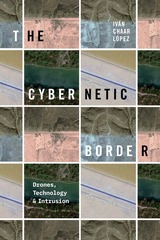 The Cybernetic Border: Drones, Technology, and Intrusion
Iván Chaar López
Duke University Press, 2024 In The Cybernetic Border, Iván Chaar López argues that the settler US nation requires the production and targeting of a racialized enemy that threatens the empire. The cybernetic border is organized through practices of data capture, storage, processing, circulation, and communication that police bodies and constitute the nation as a bounded, territorial space. Chaar López historicizes the US government’s use of border enforcement technologies on Mexicans, Arabs, and Muslims from the mid-twentieth century to the present, showing how data systems are presented as solutions to unauthorized border crossing. Contrary to enduring fantasies of the purported neutrality of drones, smart walls, artificial intelligence, and biometric technologies, the cybernetic border represents the consolidation of calculation and automation in the exercise of racialized violence. Chaar López draws on corporate, military, and government records, promotional documents and films, technical reports, news reporting, surveillance footage, and activist and artist practices. These materials reveal how logics of enmity are embedded into information infrastructures that shape border control and modern sovereignty.
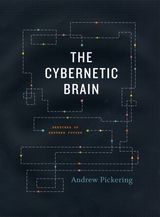 The Cybernetic Brain: Sketches of Another Future
Andrew Pickering
University of Chicago Press, 2010 Cybernetics is often thought of as a grim military or industrial science of control. But as Andrew Pickering reveals in this beguiling book, a much more lively and experimental strain of cybernetics can be traced from the 1940s to the present.
The Cybernetic Brain explores a largely forgotten group of British thinkers, including Grey Walter, Ross Ashby, Gregory Bateson, R. D. Laing, Stafford Beer, and Gordon Pask, and their singular work in a dazzling array of fields. Psychiatry, engineering, management, politics, music, architecture, education, tantric yoga, the Beats, and the sixties counterculture all come into play as Pickering follows the history of cybernetics’ impact on the world, from contemporary robotics and complexity theory to the Chilean economy under Salvador Allende. What underpins this fascinating history, Pickering contends, is a shared but unconventional vision of the world as ultimately unknowable, a place where genuine novelty is always emerging. And thus, Pickering avers, the history of cybernetics provides us with an imaginative model of open-ended experimentation in stark opposition to the modern urge to achieve domination over nature and each other.
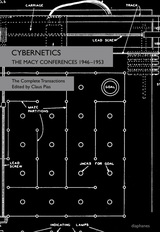 Cybernetics: The Macy Conferences 1946-1953. The Complete Transactions
Edited by Claus Pias
Diaphanes, 2016 Between 1946 and 1953, the Josiah Macy, Jr. Foundation sponsored a series of conferences aiming to bring together a diverse, interdisciplinary community of scholars and researchers who would join forces to lay the groundwork for the new science of cybernetics. These conferences, known as the Macy conferences, constituted a landmark for the field. They were the first to grapple with new terms such as information and feedback and to develop a cohesive and broadly applicable theory of systems that would become equally applicable to living beings and machines, economic and cognitive processes, and many scholarly disciplines. The concepts that emerged from the conferences come to permeate thinking in many fields, including biology, neurology, sociology, ecology, economics, politics, psychoanalysis, linguistics, and computer science.
This book contains the complete transcripts of all ten Macy conferences and the guidelines for the conference proceedings. These transcripts are supplemented with an introduction by Claus Pias that charts the significance of the Macy conferences to the history of science.
 Cybernetics: The Macy Conferences 1946-1953. The Complete Transactions
Edited by Claus Pias
Diaphanes, 2025 Between 1946 and 1953, the Josiah Macy, Jr. Foundation sponsored a series of conferences aiming to bring together a diverse, interdisciplinary community of scholars and researchers who would join forces to lay the groundwork for the new science of cybernetics. These conferences, known as the Macy conferences, constituted a landmark for the field. They were the first to grapple with new terms such as information and feedback and to develop a cohesive and broadly applicable theory of systems that would become equally applicable to living beings and machines, economic and cognitive processes, and many scholarly disciplines. The concepts that emerged from the conferences come to permeate thinking in many fields, including biology, neurology, sociology, ecology, economics, politics, psychoanalysis, linguistics, and computer science.
This book contains the complete transcripts of all ten Macy conferences and the guidelines for the conference proceedings. These transcripts are supplemented with an introduction by Claus Pias that charts the significance of the Macy conferences to the history of science.
Cyber-Physical System Design with Sensor Networking Technologies
Sherali Zeadally
The Institution of Engineering and Technology, 2016 This is a book written by leading experts in the fields of cyber-physical systems (CPS) and wireless sensor networks (WSN). This book describes how wireless sensor networking technologies can help in establishing and maintaining seamless communications between the physical and cyber systems to enable efficient, secure, reliable acquisition, management, and routing of data.
Cyber-Physical-Social Systems and Constructs in Electric Power Engineering
Siddharth Suryanarayanan
The Institution of Engineering and Technology, 2016 Cyber-physical-social systems (CPSS) integrate computing, physical assets, and human networks. Divided into four application areas to the electric grid, this book describes state-of-the-art CPSS in electric power systems, including detailed approaches on social constructs which are a critical aspect of the end-user realm. The book covers:
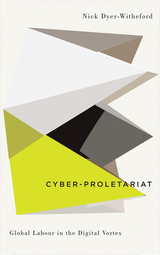 Cyber-Proletariat: Global Labour in the Digital Vortex
Nick Dyer-Witheford
Pluto Press, 2015 The utopian promise of the internet, much talked about even a few years ago, has given way to the information highway’s brutal realities: coltan mines in the Congo, electronics factories in China, devastated neighborhoods in Detroit. In Cyber-Proletariat, Nick Dyer-Witheford shows the dark side of the information revolution through an unsparing analysis of class power and computerization. He reveals how technology facilitates growing polarization between wealthy elites and precarious workers and how class dominates everything from expanding online surveillance to intensifying robotization. At the same time he looks at possibilities for information technology within radical movements, casting contemporary economic and social struggles in the blue glow of the computer screen.
Cyber-Proletariat brings Marxist analysis to bear on a range of modern informational technologies. The result is a book indispensable to social theorists and hacktivists alike and essential reading for anyone who wants to understand how Silicon Valley shapes the way we live today.
Cybersecurity in Emerging Healthcare Systems
Agbotiname Lucky Imoize
The Institution of Engineering and Technology, 2024 Emerging healthcare networks are interconnected physical systems that use cyber technologies for interaction and functionality. The proliferation of massive internet-of-things (IoT) devices enables remote and distributed access to cutting-edge diagnostics and treatment options in modern healthcare systems. New security vulnerabilities are emerging due to the increasing complexity of the healthcare architecture, in particular, threats to medical devices and critical infrastructure pose significant concerns owing to their potential risks to patient health and safety. In recent times, patients have been exposed to high risks from attacks capable of disrupting critical medical infrastructure, communications facilities, and services, interfering with medical devices, or compromising sensitive user data.
Cybersecurity in Transport Systems
Martin Hawley
The Institution of Engineering and Technology, 2022 The role of data and information and communication technology (ICT) is growing in all areas of transport, with autonomous vehicles among the most advanced examples. This opens up opportunities for malevolent interference, such as remote-control of vehicles for criminal or terrorist purposes or interruption of increasingly interconnected transport systems. It is therefore imperative that cybersecurity is upgraded and designed into new systems.
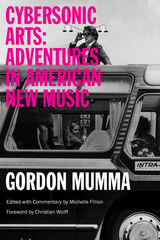 Cybersonic Arts: Adventures in American New Music
Godon Mumma, Edited by Michelle Fillion
University of Illinois Press, 2015 Composer, performer, instrument builder, teacher, and writer Gordon Mumma has left an indelible mark on the American contemporary music scene. A prolific composer and innovative French horn player, Mumma is recognized for integrating advanced electronic processes into musical structures, an approach he has termed ""Cybersonics."" Musicologist Michelle Fillion curates a collection of Mumma's writings, presenting revised versions of his classic pieces as well as many unpublished works from every stage of his storied career. Here, through words and astonishing photos, is Mumma's chronicle of seminal events in the musical world of the twentieth century: his cofounding the Cooperative Studio for Electronic Music; his role in organizing the historic ONCE Festivals of Contemporary Music; performances with the Sonic Arts Union; and working alongside John Cage and David Tudor as a composer-musician with the Merce Cunningham Dance Company. In addition, Mumma describes his collaborations with composers, performers, dancers, and visual artists ranging from Robert Ashley and Pauline Oliveros to Marcel Duchamp and Robert Rauschenberg. Candid and insightful, Cybersonic Arts is the eye-opening account of a broad artistic community by an active participant and observer.
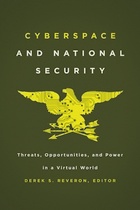 Cyberspace and National Security: Threats, Opportunities, and Power in a Virtual World
Edited by Derek S. Reveron
Georgetown University Press, 2012 In a very short time, individuals and companies have harnessed cyberspace to create new industries, a vibrant social space, and a new economic sphere that are intertwined with our everyday lives. At the same time, individuals, subnational groups, and governments are using cyberspace to advance interests through malicious activity. Terrorists recruit, train, and target through the Internet, hackers steal data, and intelligence services conduct espionage. Still, the vast majority of cyberspace is civilian space used by individuals, businesses, and governments for legitimate purposes. Cyberspace and National Security brings together scholars, policy analysts, and information technology executives to examine current and future threats to cyberspace. They discuss various approaches to advance and defend national interests, contrast the US approach with European, Russian, and Chinese approaches, and offer new ways and means to defend interests in cyberspace and develop offensive capabilities to compete there. Policymakers and strategists will find this book to be an invaluable resource in their efforts to ensure national security and answer concerns about future cyberwarfare.
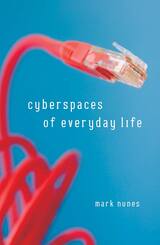 Cyberspaces Of Everyday Life
Mark Nunes
University of Minnesota Press, 2006 Networks and computer-mediated communication now penetrate the spaces of everyday life at a fundamental level. We communicate, work, bank, date, check the weather, and fuel conspiracy theories online. In each instance, users interact with network technology as much more than a computational device.
Cyberspaces of Everyday Life provides a critical framework for understanding how the Internet takes part in the production of social space. Mark Nunes draws on the spatial analysis work of Henri Lefebvre to make sense of cyberspace as a social product. Looking at online education, he explores the ways in which the Internet restructures the university. Nunes also examines social uses of the World Wide Web and illustrates the ways online communication alters the relation between the global and the local. He also applies Deleuzian theory to emphasize computer-mediated communications’ performative elements of spatial production.
Addressing the social and cultural implications of spam and anti-spam legislation, as well as how the burst Internet stock bubble and the Patriot Act have affected the relationship between networked spaces and daily living, Cyberspaces of Everyday Life sheds new light on the question of virtual space and its role in the offline world.
Mark Nunes is associate professor and chair of the English, Technical Communication, and Media Arts Department at Southern Polytechnic State University.
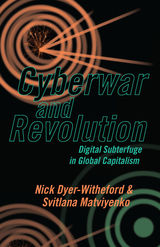 Cyberwar and Revolution: Digital Subterfuge in Global Capitalism
Nick Dyer-Witheford
University of Minnesota Press, 2019 Uncovering the class conflicts, geopolitical dynamics, and aggressive capitalism propelling the militarization of the internet
Global surveillance, computational propaganda, online espionage, virtual recruiting, massive data breaches, hacked nuclear centrifuges and power grids—concerns about cyberwar have been mounting, rising to a fever pitch after the alleged Russian hacking of the U.S. presidential election and the Cambridge Analytica scandal. Although cyberwar is widely discussed, few accounts undertake a deep, critical view of its roots and consequences.
Analyzing the new militarization of the internet, Cyberwar and Revolution argues that digital warfare is not a bug in the logic of global capitalism but rather a feature of its chaotic, disorderly unconscious. Urgently confronting the concept of cyberwar through the lens of both Marxist critical theory and psychoanalysis, Nick Dyer-Witheford and Svitlana Matviyenko provide a wide-ranging examination of the class conflicts and geopolitical dynamics propelling war across digital networks. Investigating the subjectivities that cyberwar mobilizes, exploits, and bewilders, and revealing how it permeates the fabric of everyday life and implicates us all in its design, this book also highlights the critical importance of the emergent resistance to this digital militarism—hacktivism, digital worker dissent, and off-the-grid activism—for effecting different, better futures.
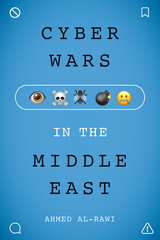 Cyberwars in the Middle East
Ahmed Al-Rawi
Rutgers University Press, 2021 Cyberwars in the Middle East argues that hacking is a form of online political disruption whose influence flows vertically in two directions (top-bottom or bottom-up) or horizontally. These hacking activities are performed along three political dimensions: international, regional, and local. Author Ahmed Al-Rawi argues that political hacking is an aggressive and militant form of public communication employed by tech-savvy individuals, regardless of their affiliations, in order to influence politics and policies. Kenneth Waltz’s structural realism theory is linked to this argument as it provides a relevant framework to explain why nation-states employ cyber tools against each other.
On the one hand, nation-states as well as their affiliated hacking groups like cyber warriors employ hacking as offensive and defensive tools in connection to the cyber activity or inactivity of other nation-states, such as the role of Russian Trolls disseminating disinformation on social media during the US 2016 presidential election. This is regarded as a horizontal flow of political disruption. Sometimes, nation-states, like the UAE, Saudi Arabia, and Bahrain, use hacking and surveillance tactics as a vertical flow (top-bottom) form of online political disruption by targeting their own citizens due to their oppositional or activists’ political views. On the other hand, regular hackers who are often politically independent practice a form of bottom-top political disruption to address issues related to the internal politics of their respective nation-states such as the case of a number of Iraqi, Saudi, and Algerian hackers. In some cases, other hackers target ordinary citizens to express opposition to their political or ideological views which is regarded as a horizontal form of online political disruption. This book is the first of its kind to shine a light on many ways that governments and hackers are perpetrating cyber attacks in the Middle East and beyond, and to show the ripple effect of these attacks.
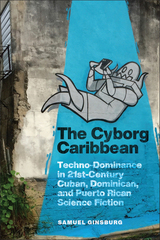 The Cyborg Caribbean: Techno-Dominance in Twenty-First-Century Cuban, Dominican, and Puerto Rican Science Fiction
Samuel Ginsburg
Rutgers University Press, 2023 Finalist for the Gordon K. and Sybil Lewis Award from the Caribbean Studies Association
The Cyborg Caribbean examines a wide range of twenty-first-century Cuban, Dominican, and Puerto Rican science fiction texts, arguing that authors from Pedro Cabiya, Alexandra Pagan-Velez, and Vagabond Beaumont to Yasmin Silvia Portales, Erick Mota, and Yoss, Haris Durrani, and Rita Indiana Hernandez, among others, negotiate rhetorical legacies of historical techno-colonialism and techno-authoritarianism. The authors span the Hispanic Caribbean and their respective diasporas, reflecting how science fiction as a genre has the ability to manipulate political borders. As both a literary and historical study, the book traces four different technologies—electroconvulsive therapy, nuclear weapons, space exploration, and digital avatars—that have transformed understandings of corporality and humanity in the Caribbean. By recognizing the ways that increased technology may amplify the marginalization of bodies based on race, gender, sexuality, and other factors, the science fiction texts studied in this book challenge oppressive narratives that link technological and sociopolitical progress.
 Cyborg Fever
Laurie Sheck
Tupelo Press, 2025 Cyborg Fever addresses timely questions about AI, technology, and their role in shaping relationships.
In Cyborg Fever, acclaimed writer Laurie Sheck brings us a probing and lyrical philosophical fiction in the spirit of Umberto Eco, Italo Calvino, and Donna Haraway’s Cyborg Manifesto that enacts an incisive and moving exploration into what it means to be human in the age of AI and increasing transhumanism.
Throughout Cyborg Fever, many strange, surprising facts appear: an artist clones a flower from his DNA and the DNA of a petunia, an astronaut plays golf on the moon, a mathematician on a rest cure rethinks the life of Shakespeare, and particles and antiparticles collide at lightning speed beneath the green hills of Switzerland and France. Threaded throughout, one question lingers: in this age of AI and genetic engineering, how can we come to know more fully what it means to love and be human among the wonders and destructions we have wrought on Earth?
At the center of the book is the narrator, Erwin, left as an hours-old infant on the steps of an orphanage where he is named after the renowned physicist Erwin Schrodinger (of the famous Schrodinger’s cat experiment). After a traumatic fall into a year-long fever dream, he experiences many visions that take him into many areas of inquiry including the nature of the universe, bioengineering, medical experimentation, cyborgs, AI, and space and time, and ultimately teaches him the nature of love. Along the way, he develops a friendship with a gentle cyborg who has escaped from a Lab involved in covert medical intervention. Guided by the cyborg and a vision of Funes (of Borges’s iconic story “Funes the Memorious”), Erwin experiences the Information Age and the promises of AI in all its beauty and, ultimately, its terror, as he watches the cyborg he has come to love devolve into an unfeeling information machine.
Throughout, issues of personhood, human attachment, and the dignity of all living beings pervade Erwin’s thinking and leave him with a larger understanding and appreciation of what it means to love.
 Cyborgs, Sexuality, and the Undead: The Body in Mexican and Brazilian Speculative Fiction
M. Elizabeth Ginway
Vanderbilt University Press, 2020 Writers in Brazil and Mexico discovered early on that speculative fiction provides an ideal platform for addressing the complex issues of modernity, yet the study of speculative fictions rarely strays from the United States and England. Cyborgs, Sexuality, and the Undead expands the traditional purview of speculative fiction in all its incarnations (science fiction, fantasy, horror) beyond the traditional Anglo-American context to focus on work produced in Mexico and Brazil across a historical overview from 1870 to the present. The book portrays the effects—and ravages—of modernity in these two nations, addressing its technological, cultural, and social consequences and their implications for the human body.
In Cyborgs, Sexuality, and the Undead, M. Elizabeth Ginway examines all these issues from a number of theoretical perspectives, most importantly through the lens of Bolívar Echeverría’s “baroque ethos,” which emphasizes the strategies that subaltern populations may adopt in order to survive and prosper in the face of massive historical and structural disadvantages. Foucault’s concept of biopolitics is developed in discussion with Roberto Esposito’s concept of immunity and Giorgio Agamben’s distinction between “political life” and “bare life.”
This book will be of interest to scholars of speculative fiction, as well as Mexicanists and Brazilianists in history, literary studies, and critical theory.
Cycladic Art
J. Lesley Fitton
Harvard University Press, 1990 In the light of current knowledge about early life in the islands, the author draws upon the impressive and remarkably comprehensive collection of Early Cycladic sculptures and other works in the British Museum, supplemented by striking examples from major American and Greek collections, to illustrate the development and increase our enjoyment of Early Cycladic art.
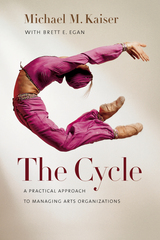 The Cycle: A Practical Approach to Managing Arts Organizations
Michael M. Kaiser and Brett E. Egan
Brandeis University Press, 2013 In the third book of his popular trilogy on creating and sustaining arts organizations, Michael Kaiser reveals the hidden engine that powers consistent success. According to Kaiser, successful arts organizations pursue strong programmatic marketing campaigns that compel people to buy tickets, enroll in classes, and so on—in short, to participate in the organization’s programs. Additionally, they create exciting activities that draw people to the organization as a whole. This institutional marketing creates a sense of enthusiasm that attracts donors, board members, and volunteers. Kaiser calls this group of external supporters the family. When this hidden engine is humming, staff, board, and audience members, artists, and donors feel confidence in the future. Resources are reinvested in more and better art, which is marketed aggressively; as a result, the “family” continues to grow, providing even more resources. This self-reinforcing cycle underlies the activities of all healthy arts organizations, and the theory behind it can be used as a diagnostic tool to reveal—and remedy—the problems of troubled ones. This book addresses each element of the cycle in the hope that more arts organizations around the globe—from orchestras, theaters, museums, opera companies, and classical and modern dance organizations to service organizations and other not-for-profit cultural institutions—will be able to sustain remarkable creativity, pay the bills, and have fun doing so!
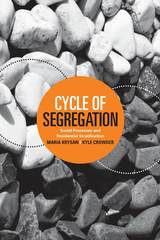 Cycle of Segregation: Social Processes and Residential Stratification
Maria Krysan
Russell Sage Foundation, 2017 The Fair Housing Act of 1968 outlawed housing discrimination by race and provided an important tool for dismantling legal segregation. But almost fifty years later, residential segregation remains virtually unchanged in many metropolitan areas, particularly where large groups of racial and ethnic minorities live. Why does segregation persist at such high rates and what makes it so difficult to combat? In Cycle of Segregation, sociologists Maria Krysan and Kyle Crowder examine how everyday social processes shape residential stratification. Past neighborhood experiences, social networks, and daily activities all affect the mobility patterns of different racial groups in ways that have cemented segregation as a self-perpetuating cycle in the twenty-first century.
Through original analyses of national-level surveys and in-depth interviews with residents of Chicago, Krysan and Crowder find that residential stratification is reinforced through the biases and blind spots that individuals exhibit in their searches for housing. People rely heavily on information from friends, family, and coworkers when choosing where to live. Because these social networks tend to be racially homogenous, people are likely to receive information primarily from members of their own racial group and move to neighborhoods that are also dominated by their group. Similarly, home-seekers who report wanting to stay close to family members can end up in segregated destinations because their relatives live in those neighborhoods. The authors suggest that even absent of family ties, people gravitate toward neighborhoods that are familiar to them through their past experiences, including where they have previously lived, and where they work, shop, and spend time. Because historical segregation has shaped so many of these experiences, even these seemingly race-neutral decisions help reinforce the cycle of residential stratification. As a result, segregation has declined much more slowly than many social scientists have expected.
To overcome this cycle, Krysan and Crowder advocate multi-level policy solutions that pair inclusionary zoning and affordable housing with education and public relations campaigns that emphasize neighborhood diversity and high-opportunity areas. They argue that together, such programs can expand the number of destinations available to low-income residents and help offset the negative images many people hold about certain neighborhoods or help introduce them to places they had never considered. Cycle of Segregation demonstrates why a nuanced understanding of everyday social processes is critical for interrupting entrenched patterns of residential segregation.
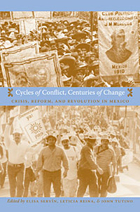 Cycles of Conflict, Centuries of Change: Crisis, Reform, and Revolution in Mexico
Elisa Servín, Leticia Reina, and John Tutino, eds.
Duke University Press, 2007 This important collection explores how Mexico’s tumultuous past informs its uncertain present and future. Cycles of crisis and reform, of conflict and change, have marked Mexico’s modern history. The final decades of the eighteenth, nineteenth, and twentieth centuries each brought efforts to integrate Mexico into globalizing economies, pressures on the country’s diverse peoples, and attempts at reform. The crises of the late eighteenth century and the late nineteenth led to revolutionary mobilizations and violent regime changes. The wars for independence that began in 1810 triggered conflicts that endured for decades; the national revolution that began in 1910 shaped Mexico for most of the twentieth century. In 2000, the PRI, which had ruled for more than seventy years, was defeated in an election some hailed as “revolution by ballot.” Mexico now struggles with the legacies of a late-twentieth-century crisis defined by accelerating globalization and the breakdown of an authoritarian regime that was increasingly unresponsive to historic mandates and popular demands. Leading Mexicanists—historians and social scientists from Mexico, the United States, and Europe—examine the three fin-de-siècle eras of crisis. They focus on the role of the country’s communities in advocating change from the eighteenth century to the present. They compare Mexico’s revolutions of 1810 and 1910 and consider whether there might be a twenty-first-century recurrence or whether a globalizing, urbanizing, and democratizing world has so changed Mexico that revolution is improbable. Reflecting on the political changes and social challenges of the late twentieth century, the contributors ask if a democratic transition is possible and, if so, whether it is sufficient to address twenty-first-century demands for participation and justice. Contributors. Antonio Annino, Guillermo de la Peña, François-Xavier Guerra, Friedrich Katz, Alan Knight, Lorenzo Meyer, Leticia Reina, Enrique Semo, Elisa Servín, John Tutino, Eric Van Young
Cycles of Conquest: The Impact of Spain, Mexico, and the United States on the Indians of the Southwest, 1533–1960
Edward H. Spicer, Foreword by Thomas E. Sheridan
University of Arizona Press, 1962 Examines the effects of European expansion on the language, social structure, economy, religion, and self-image of Navajo, Yaqui, Papago, and other native American communities.
 Cycles of Invention and Discovery: Rethinking the Endless Frontier
Venkatesh Narayanamurti and Toluwalogo Odumosu
Harvard University Press, 2016 Cycles of Invention and Discovery offers an in-depth look at the real-world practice of science and engineering. It shows how the standard categories of “basic” and “applied” have become a hindrance to the organization of the U.S. science and technology enterprise. Tracing the history of these problematic categories, Venkatesh Narayanamurti and Toluwalogo Odumosu document how historical views of policy makers and scientists have led to the construction of science as a pure ideal on the one hand and of engineering as a practical (and inherently less prestigious) activity on the other. Even today, this erroneous but still widespread distinction forces these two endeavors into separate silos, misdirects billions of dollars, and thwarts progress in science and engineering research.
The authors contrast this outmoded perspective with the lived experiences of researchers at major research laboratories. Using such Nobel Prize–winning examples as magnetic resonance imaging, the transistor, and the laser, they explore the daily micro-practices of research, showing how distinctions between the search for knowledge and creative problem solving break down when one pays attention to the ways in which pathbreaking research actually happens. By studying key contemporary research institutions, the authors highlight the importance of integrated research practices, contrasting these with models of research in the classic but still-influential report Science the Endless Frontier. Narayanamurti and Odumosu’s new model of the research ecosystem underscores that discovery and invention are often two sides of the same coin that moves innovation forward.
Cycles of Taste: An Unacknowledged Problem in Ancient Art and Criticism
Frank P. Chambers
Harvard University Press Frank Chambers begins his essay with the assumption that not in the controversies of modern scholars and art critics can a working theory of ancient aesthetics be discovered but in ancient literature itself. He believes that, from the early descriptions of armor and architecture in the Homeric poems up to the meditations of Plotinus and the later Latin authors, there is a continuous record of the Classical Taste. Briefly, he seeks to answer the question: What had Antiquity to say of its own arts and artists? His policy from first to last is that only by allowing the ancients to speak for themselves can a reliable estimate of their thoughts and feelings be made.
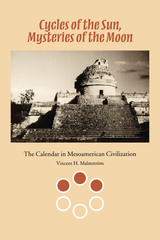 Cycles of the Sun, Mysteries of the Moon: The Calendar in Mesoamerican Civilization
By Vincent H. Malmström
University of Texas Press, 1996 The simple question "How did the Maya come up with a calendar that had only 260 days?" led Vincent Malmström to discover an unexpected "hearth" of Mesoamerican culture. In this boldly revisionist book, he sets forth his challenging, new view of the origin and diffusion of Mesoamerican calendrical systems—the intellectual achievement that gave rise to Mesoamerican civilization and culture. Malmström posits that the 260-day calendar marked the interval between passages of the sun at its zenith over Izapa, an ancient ceremonial center in the Soconusco region of Mexico's Pacific coastal plain. He goes on to show how the calendar developed by the Zoque people of the region in the fourteenth century B.C. gradually diffused through Mesoamerica into the so-called "Olmec metropolitan area" of the Gulf coast and beyond to the Maya in the east and to the plateau of Mexico in the west. These findings challenge our previous understanding of the origin and diffusion of Mesoamerican civilization. Sure to provoke lively debate in many quarters, this book will be important reading for all students of ancient Mesoamerica—anthropologists, archaeologists, archaeoastronomers, geographers, and the growing public fascinated by all things Maya.
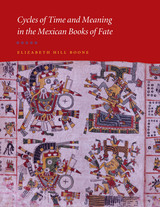 Cycles of Time and Meaning in the Mexican Books of Fate
By Elizabeth Hill Boone
University of Texas Press, 2007 In communities throughout precontact Mesoamerica, calendar priests and diviners relied on pictographic almanacs to predict the fate of newborns, to guide people in choosing marriage partners and auspicious wedding dates, to know when to plant and harvest crops, and to be successful in many of life's activities. As the Spanish colonized Mesoamerica in the sixteenth century, they made a determined effort to destroy these books, in which the Aztec and neighboring peoples recorded their understanding of the invisible world of the sacred calendar and the cosmic forces and supernaturals that adhered to time. Today, only a few of these divinatory codices survive. Visually complex, esoteric, and strikingly beautiful, painted books such as the famous Codex Borgia and Codex Borbonicus still serve as portals into the ancient Mexican calendrical systems and the cycles of time and meaning they encode. In this comprehensive study, Elizabeth Hill Boone analyzes the entire extant corpus of Mexican divinatory codices and offers a masterful explanation of the genre as a whole. She introduces the sacred, divinatory calendar and the calendar priests and diviners who owned and used the books. Boone then explains the graphic vocabulary of the calendar and its prophetic forces and describes the organizing principles that structure the codices. She shows how they form almanacs that either offer general purpose guidance or focus topically on specific aspects of life, such as birth, marriage, agriculture and rain, travel, and the forces of the planet Venus. Boone also tackles two major areas of controversy—the great narrative passage in the Codex Borgia, which she freshly interprets as a cosmic narrative of creation, and the disputed origins of the codices, which, she argues, grew out of a single religious and divinatory system.
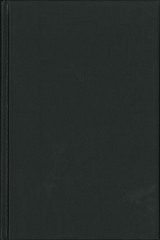 Cycles, Sequels, Spin-offs, Remakes, and Reboots: Multiplicities in Film and Television
Edited by Amanda Ann Klein and R. Barton Palmer
University of Texas Press, 2016 With sequels, prequels, remakes, spin-offs, or copies of successful films or franchises dominating film and television production, it sometimes seems as if Hollywood is incapable of making an original film or TV show. These textual pluralities or multiplicities—while loved by fans who flock to them in droves—tend to be dismissed by critics and scholars as markers of the death of high culture. Cycles, Sequels, Spin-offs, Remakes, and Reboots takes the opposite view, surveying a wide range of international media multiplicities for the first time to elucidate their importance for audiences, industrial practices, and popular culture. The essays in this volume offer a broad picture of the ways in which cinema and television have used multiplicities to streamline the production process, and to capitalize on and exploit viewer interest in previously successful and/or sensational story properties. An impressive lineup of established and emerging scholars talk seriously about forms of multiplicity that are rarely discussed as such, including direct-to-DVD films made in Nigeria, cross-cultural Japanese horror remakes, YouTube fan-generated trailer mash-ups, and 1970s animal revenge films. They show how considering the particular bonds that tie texts to one another allows us to understand more about the audiences for these texts and why they crave a version of the same story (or character or subject) over and over again. These findings demonstrate that, far from being lowbrow art, multiplicities are actually doing important cultural work that is very worthy of serious study.
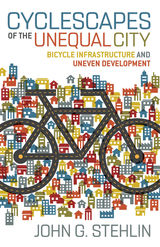 Cyclescapes of the Unequal City: Bicycle Infrastructure and Uneven Development
John G. Stehlin
University of Minnesota Press, 2019 A critical look at the political economy of urban bicycle infrastructure in the United States Not long ago, bicycling in the city was considered a radical statement or a last resort, and few cyclists braved the inhospitable streets of most American cities. Today, however, the urban cyclist represents progress and the urban “renaissance.” City leaders now undertake ambitious new bicycle infrastructure plans and bike share schemes to promote the environmental, social, and economic health of the city and its residents. Cyclescapes of the Unequal City contextualizes and critically examines this new wave of bicycling in American cities, exploring how bicycle infrastructure planning has become a key symbol of—and site of conflict over—uneven urban development. John G. Stehlin traces bicycling’s rise in popularity as a key policy solution for American cities facing the environmental, economic, and social contradictions of the previous century of sprawl. Using in-depth case studies from San Francisco, Philadelphia, and Detroit, he argues that the mission of bicycle advocacy has converged with, and reshaped, the urban growth machine around a model of livable, environmentally friendly, and innovation-based urban capitalism. While advocates envision a more sustainable city for all, the deployment of bicycle infrastructure within the framework of the neoliberal city in many ways intensifies divisions along lines of race, class, and space. Cyclescapes of the Unequal City speaks to a growing interest in bicycling as an urban economic and environmental strategy, its role in the politics of gentrification, and efforts to build more diverse coalitions of bicycle advocates. Grounding its analysis in both regional political economy and neighborhood-based ethnography, this book ultimately uses the bicycle as a lens to view major shifts in today’s American city.
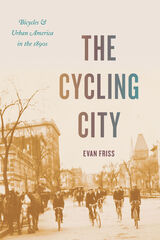 The Cycling City: Bicycles and Urban America in the 1890s
Evan Friss
University of Chicago Press, 2015 Cycling has experienced a renaissance in the United States, as cities around the country promote the bicycle as an alternative means of transportation. In the process, debates about the nature of bicycles—where they belong, how they should be ridden, how cities should or should not accommodate them—have played out in the media, on city streets, and in city halls. Very few people recognize, however, that these questions are more than a century old.
The Cycling City is a sharp history of the bicycle’s rise and fall in the late nineteenth century. In the 1890s, American cities were home to more cyclists, more cycling infrastructure, more bicycle friendly legislation, and a richer cycling culture than anywhere else in the world. Evan Friss unearths the hidden history of the cycling city, demonstrating that diverse groups of cyclists managed to remap cities with new roads, paths, and laws, challenge social conventions, and even dream up a new urban ideal inspired by the bicycle. When cities were chaotic and filthy, bicycle advocates imagined an improved landscape in which pollution was negligible, transportation was silent and rapid, leisure spaces were democratic, and the divisions between city and country were blurred. Friss argues that when the utopian vision of a cycling city faded by the turn of the century, its death paved the way for today’s car-centric cities—and ended the prospect of a true American cycling city ever being built.
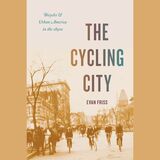 The Cycling City: Bicycles and Urban America in the 1890s
Evan Friss
University of Chicago Press, 2015 This is an auto-narrated audiobook version of this book.
Cycling has experienced a renaissance in the United States, as cities around the country promote the bicycle as an alternative means of transportation. In the process, debates about the nature of bicycles—where they belong, how they should be ridden, how cities should or should not accommodate them—have played out in the media, on city streets, and in city halls. Very few people recognize, however, that these questions are more than a century old.
The Cycling City is a sharp history of the bicycle’s rise and fall in the late nineteenth century. In the 1890s, American cities were home to more cyclists, more cycling infrastructure, more bicycle friendly legislation, and a richer cycling culture than anywhere else in the world. Evan Friss unearths the hidden history of the cycling city, demonstrating that diverse groups of cyclists managed to remap cities with new roads, paths, and laws, challenge social conventions, and even dream up a new urban ideal inspired by the bicycle. When cities were chaotic and filthy, bicycle advocates imagined an improved landscape in which pollution was negligible, transportation was silent and rapid, leisure spaces were democratic, and the divisions between city and country were blurred. Friss argues that when the utopian vision of a cycling city faded by the turn of the century, its death paved the way for today’s car-centric cities—and ended the prospect of a true American cycling city ever being built.
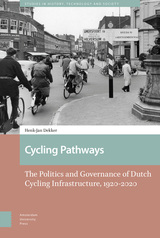 Cycling Pathways: The Politics and Governance of Dutch Cycling Infrastructure, 1920-2020
Henk-Jan Dekker
Amsterdam University Press, 2022 In an effort to fight climate change, many cities try to boost their cycling levels. They often look towards the Dutch for guidance. However, historians have only begun to uncover how and why the Netherlands became the premier cycling country of the world. Why were Dutch cyclists so successful in their fight for a place on the road? Cycling Pathways: The Politics and Governance of Dutch Cycling Infrastructure, 1920-2020 explores the long political struggle that culminated in today’s high cycling levels. Delving into the archives, it uncovers the important role of social movements and shows in detail how these interacted with national, provincial, and urban engineers and policymakers to govern the distribution of road space and construction of cycling infrastructure. It discusses a wide range of topics, ranging from activists to engineering committees, from urban commuters to recreational cyclists and from the early 1900s to today in order to uncover the long and all-but-forgotten history of Dutch cycling governance.
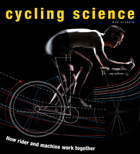 Cycling Science: How Rider and Machine Work Together
Max Glaskin
University of Chicago Press, 2012 Every July hundreds of thousands flock to the Champs-Élysées in Paris—and millions more to their televisions and computers—to witness the dramatic conclusion of the grueling three weeks of the Tour de France. There is no better measure of the worldwide love of the bicycle. But of the 1.2 billion cyclists traversing the world’s roadways and trails, few of us take the time to consider the science behind the sport. The simple process of getting about on two wheels brings us in touch with a wealth of fascinating science, and here journalist Max Glaskin investigates the scientific wonders that keep cyclists in their saddles. Cycling Science tours readers through a wide variety of topics, from tire rolling resistance and the difference between yield strength and ultimate strength, to the importance of aerodynamics and the impact that shaved legs have on speed. Each chapter explores a different subject—fundamentals, strength and stability, materials, power, aerodynamics, and the human factor—and is organized around a series of questions: What is the ideal frame shape? What is the biggest source of drag? What keeps a bicycle from falling over? How much power can a cyclist produce? Which muscles does cycling use? Each question is examined with the aid of explanatory diagrams and illustrations, and the book can be used to search for particular topics, or read through for a comprehensive overview of how machine and rider work together. Athletes have much to gain from understanding the science of their sports, and Cycling Science will be a must-read for cyclists of all stripes—professionals, recreational riders, and anyone seeking to enhance their enjoyment of cycling.
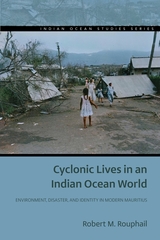 Cyclonic Lives in an Indian Ocean World: Environment, Disaster, and Identity in Modern Mauritius
Robert M. Rouphail
Ohio University Press Disasters as historical processes shaping identity, governance, and diasporic memory in colonial and postcolonial Mauritius In a world marked by increasingly destructive ecological and meteorological upheavals, Cyclonic Lives in an Indian Ocean World offers a historical analysis of how these catastrophes shape people’s understanding of themselves, their collective history, and their relationship to the institutions that govern them. An examination of cyclonic disasters in the multiethnic Indian Ocean island of Mauritius throws into stark relief how deep histories of diasporic identity formation, of imperial governance, and of the informal practices of racial difference making graft onto how everyday people interpret these moments of loss and the futures that emerge in their wake. Cyclonic Lives shows that disasters are not only events; they are also processes through which people evaluate and rethink the most elemental social and cultural categories that give meaning to their lives. Beginning in the late nineteenth century and continuing until the early postcolonial era, this book tracks, for example, how Mauritians of African descent integrated these disasters into broader collective histories and memories of the Indian Ocean slave trade, how Hindu Indo-Mauritians understood cyclones’ ecological effects as material elements to be accounted for in a broader Hindu diasporic space, and how the late colonial and early postcolonial state built infrastructures—material, conceptual, and financial—to mitigate the threats posed by these storms and ensure their own long-term durability. The increasing political, social, and economic instability that climate change has already triggered demands that humanists develop analytical geographies and methodologies that shed light on how power can modulate in asymmetrical ways at moments of crisis. If there is one central takeaway from this historical study of this small island in a big ocean, it is that catastrophic events are not things that merely happen to people; they are processes that remake them.
Cyclops. Alcestis. Medea
Euripides
Harvard University Press, 1994 Three plays by ancient Greece’s third great tragedian.
One of antiquity's greatest poets, Euripides has been prized in every age for the pathos, terror, and intellectual probing of his dramatic creations. The new Loeb Classical Library edition of his plays is in six volumes.
In Volume I of the edition are Cyclops, the only complete satyr play that has survived from antiquity; Alcestis, the story of a woman who agrees, in order to save her husband's life, to die in his place; and Medea, a revenge tragedy in which Medea kills her own children to punish their father.
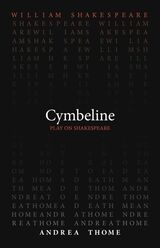 Cymbeline
William Shakespeare
Arizona Center for Medieval and Renaissance Studies, 2023 One of Shakespeare’s late plays rewritten in contemporary language.
In her modern translation of Cymbeline, Andrea Thome takes up one of Shakespeare’s most complex plays. Thome’s update brings the play’s language into the present, highlighting new resonances and providing a more accessible version of Shakespeare’s play for today’s audiences. One of Shakespeare’s final plays, Cymbeline tells the story of the British king Cymbeline and his daughter, Imogen. It is a tale of deceit and jealousy, with accusations of infidelity that often draw comparisons to Othello and The Winter’s Tale.
This translation of Cymbeline was written as part of the Oregon Shakespeare Festival’s Play On! project, which commissioned new translations of thirty-nine Shakespeare plays. These translations present the work of “The Bard” in language accessible to modern audiences while never losing the beauty of Shakespeare’s verse. Enlisting the talents of a diverse group of contemporary playwrights, screenwriters, and dramaturges from diverse backgrounds, this project reenvisions Shakespeare for the twenty-first century. These volumes make these works available for the first time in print—a new First Folio for a new era.
The Cynical Society: The Culture of Politics and the Politics of Culture in American Life
Jeffrey C. Goldfarb
University of Chicago Press, 1991 The Cynical Society is a study of the political despair and abdication of (individual) responsibility Goldfarb calls cynicism—a central but unexamined aspect of contemporary American political and social life. Goldfarb reveals with vivid strokes how cynicism undermines our capacity to think about society's strengths and weaknesses. Drawing on thinkers from Alexis de Tocqueville to Allan Bloom and on such recent works as Beloved, Bonfire of the Vanities, and Mississippi Burning, The Cynical Society celebrates cultural pluralism's role in democracy.
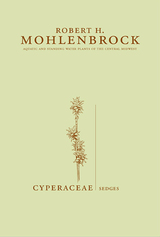 Cyperaceae: Sedges
Robert H. Mohlenbrock
Southern Illinois University Press, 2005 The first in a series of four illustrated guides to identifying aquatic and standing water plants in the central Midwest, this convenient reference volume covers the 183 species of Cyperaceae. Robert H. Mohlenbrock includes three types of plants: submergents, those that spend their entire lives with their vegetative parts either completely submerged or at least floating on the water’s surface; emergents, which are typically rooted underwater with their vegetative parts standing out of water; and a third category of plants that live most of their lives out of water, but which may live in water at least three months a year.
Mohlenbrock provides descriptions, illustrations, and ways to identify any plant in the sedge family (Cyperaceae) in the states of Kentucky (except for the Cumberland region), Ohio, Indiana, Illinois, Iowa, Missouri, Kansas, and Nebraska. With taxa arranged alphabetically, the volume is well organized and easy to use. In addition, basic synonymy, description, distribution, comments, and line drawings that show the habits and distinguishing features for each plant. Habitat and nomenclatural notes are also listed, as are the official wetland designations given by the U.S. Fish and Wildlife Service.
Cyperaceae is a useful standard reference for state and federal employees who deal with aquatic and wetland plants and environmental conservation and mitigation issues and an essential guide for students and instructors in college and university courses where the identification of aquatic and wetland plants is emphasized.
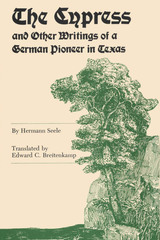 The Cypress and Other Writings of a German Pioneer in Texas
By Hermann Seele
University of Texas Press, 1979 When Hermann Seele anived in New Braunfels in 1845, the raw colony was plagued by poverty, disease, lack of food, and hostile Indians. This personal record of the Germans in Texas shows their evolution from struggling colonists to prosperous citizens. From his viewpoint of a hardworking yet imaginative pioneer, Seele presents first a history of German immigration and settlement in Texas during the nineteenth century. Next, his autobiographical writings range from a "sentimental recollection" of his first Christmas Eve in Texas to his first day of teaching in New Braunfels, from accounts of the popular singing society to murder and justice along the Comal River. In addition, Seele's romantic novel, The Cypress, is a delightful though improbable tale of a traveling botanist, a chieftain's daughter, and a savage Indian cult. Hermann Seele—farmer, lawyer, teacher, lay preacher, mayor, state representative, Civil War major, and editor—epitomizes the best of the German immigrants who established their communities as models of respectability and prosperity.
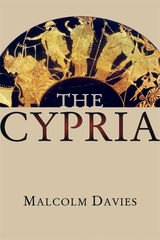 The Cypria
Malcolm Davies
Harvard University Press The Cypria, so named because its poet supposedly came from the island of Cyprus, was an early Greek epic that is known to us primarily through quotations and references to passages by later authors, as well as through a prose summary of its plot and contents.
Malcolm Davies uses linguistic evidence from the available verbatim fragments, along with other considerations, to suggest that the Cypria was written after Homer and was intended as a sort of prequel to the plot of the Iliad. In light of this evidence, it is noteworthy that many of the incidents described in the Cypria seem markedly un-Homeric; to give just one example, the Judgment of Paris, a popular subject in later Greek literature and art, most likely received its first detailed treatment in the Cypria, whereas the Iliad mentions it only fleetingly.
Here Davies collects and translates the extant fragments of the Cypria and provides a commentary that anchors it in the Homeric context as well as in the broader world of ancient Greek art and literature.
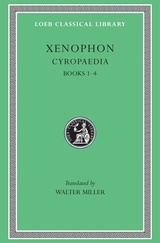 Cyropaedia, Volume I: Books 1–4
Xenophon
Harvard University Press A royal education.
Xenophon (ca. 430 to ca. 354 BC) was a wealthy Athenian and friend of Socrates. He left Athens in 401 and joined an expedition including ten thousand Greeks led by the Persian governor Cyrus against the Persian king. After the defeat of Cyrus, it fell to Xenophon to lead the Greeks from the gates of Babylon back to the coast through inhospitable lands. Later he wrote the famous vivid account of this “March Up-Country” (Anabasis); but meanwhile he entered service under the Spartans against the Persian king, married happily, and joined the staff of the Spartan king, Agesilaus. But Athens was at war with Sparta in 394 and so exiled Xenophon. The Spartans gave him an estate near Elis where he lived for years writing and hunting and educating his sons. Reconciled to Sparta, Athens restored Xenophon to honor, but he preferred to retire to Corinth.
Xenophon’s Anabasis is a true story of remarkable adventures. Hellenica, a history of Greek affairs from 411 to 362, begins as a continuation of Thucydides’ account. There are four works on Socrates (collected in LCL 168). In Memorabilia Xenophon adds to Plato’s picture of Socrates from a different viewpoint. The Apology is an interesting complement to Plato’s account of Socrates’ defense at his trial. Xenophon’s Symposium portrays a dinner party at which Socrates speaks of love; and Oeconomicus has him giving advice on household management and married life. Cyropaedia, a historical romance on the education of Cyrus (the Elder), reflects Xenophon’s ideas about rulers and government; the Loeb edition is in two volumes.
We also have his Hiero, a dialogue on government; Agesilaus, in praise of that king; Constitution of Lacedaemon (on the Spartan system); Ways and Means (on the finances of Athens); Manual for a Cavalry Commander; a good manual of Horsemanship; and a lively Hunting with Hounds. The Constitution of the Athenians, though clearly not by Xenophon, is an interesting document on politics at Athens. These eight books are collected in the last of the seven volumes of the Loeb Classical Library edition of Xenophon.
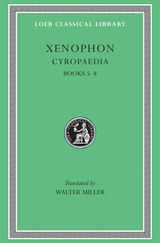 Cyropaedia, Volume II: Books 5–8
Xenophon
Harvard University Press A royal education.
Xenophon (ca. 430 to ca. 354 BC) was a wealthy Athenian and friend of Socrates. He left Athens in 401 and joined an expedition including ten thousand Greeks led by the Persian governor Cyrus against the Persian king. After the defeat of Cyrus, it fell to Xenophon to lead the Greeks from the gates of Babylon back to the coast through inhospitable lands. Later he wrote the famous vivid account of this “March Up-Country” (Anabasis); but meanwhile he entered service under the Spartans against the Persian king, married happily, and joined the staff of the Spartan king, Agesilaus. But Athens was at war with Sparta in 394 and so exiled Xenophon. The Spartans gave him an estate near Elis where he lived for years writing and hunting and educating his sons. Reconciled to Sparta, Athens restored Xenophon to honor, but he preferred to retire to Corinth.
Xenophon’s Anabasis is a true story of remarkable adventures. Hellenica, a history of Greek affairs from 411 to 362, begins as a continuation of Thucydides’ account. There are four works on Socrates (collected in LCL 168). In Memorabilia Xenophon adds to Plato’s picture of Socrates from a different viewpoint. The Apology is an interesting complement to Plato’s account of Socrates’ defense at his trial. Xenophon’s Symposium portrays a dinner party at which Socrates speaks of love; and Oeconomicus has him giving advice on household management and married life. Cyropaedia, a historical romance on the education of Cyrus (the Elder), reflects Xenophon’s ideas about rulers and government; the Loeb edition is in two volumes.
We also have his Hiero, a dialogue on government; Agesilaus, in praise of that king; Constitution of Lacedaemon (on the Spartan system); Ways and Means (on the finances of Athens); Manual for a Cavalry Commander; a good manual of Horsemanship; and a lively Hunting with Hounds. The Constitution of the Athenians, though clearly not by Xenophon, is an interesting document on politics at Athens. These eight books are collected in the last of the seven volumes of the Loeb Classical Library edition of Xenophon.
 Cyrus the Great: Life and Lore
M. Rahim Shayegan
Harvard University Press, 2019 The edited volume Cyrus the Great: Life and Lore re-contextualizes Cyrus’s foundational act and epoch in light of recent scholarship, while examining his later reception in antiquity and beyond. Among the many themes addressed in the volume are: the complex dossier of Elamo-Persian acculturation; the Mesopotamian antecedents of Cyrus’s edict and religious policy; Cyrus’s Baupolitik at Pasargadae, and the idiosyncratic genesis of Persian imperial art; the Babylonian exile, the Bible, and the First Return; Cyrus’s exalted but conflicted image in the later Greco-Roman world; his reception and programmatic function in genealogical constructs of the Hellenistic and Arsacid periods; and finally Cyrus’s conspicuous and enigmatic evanescence in the Sasanian and Muslim traditions.
The sum of these wide-ranging contributions assembled in one volume, as well as a new critical edition and English translation of the Cyrus Cylinder, allow for a more adequate evaluation of Cyrus’s impact on his own age, as well as his imprint on posterity.
Czars in the White House: The Rise of Policy Czars as Presidential Management Tools
Justin S. Vaughn and José D. Villalobos
University of Michigan Press, 2015 When Barack Obama entered the White House, he followed a long-standing precedent for the development and implementation of major policies by appointing administrators—so-called policy czars—charged with directing the response to the nation’s most pressing crises. Demonstrating that the creation of policy czars is a strategy for combating partisan polarization and navigating the federal government’s complexity, Vaughn and Villalobos offer a sober, empirical analysis of what precisely constitutes a czar and what role they have played in the modern presidency.
 Czech Action Art: Happenings, Actions, Events, Land Art, Body Art and Performance Art Behind the Iron Curtain
Pavlína Morganová
Karolinum Press, 2014 Czech action art—a medium similar to performance art that does not require an audience—emerged out of the political and social turmoil of the 1960s. This movement has received little critical attention, however, as the Iron Curtain prevented its dissemination to an international audience. Here theorist and art historian Pavlína Morganová gives this art scene its due, chronicling its inception and tracing its evolution through to the present.
Morganová explains the various forms of action art, from the “actions” and “happenings” of the 1960s; to the actions of land art that encompass stones, trees, water, or fire; to recent displays of body art; to the actions of the latest generation of artists, who are using the principles of action art in contemporary postconceptual and participative art. Along the way, she introduces the most prominent Czech artists of each specific niche, including Milan Knížák, Zorka Ságlová, Ivan Kafka, Petr Štembera, Karel Miler, Jirí Kovanda, and Katerina Šedá, and demonstrates not only the changes in the art forms themselves but also the shifting roles of artists and spectators after World War II.
With over one hundred illustrations, Czech Action Art introduces this heretofore overlooked but fascinating art form to a global readership.
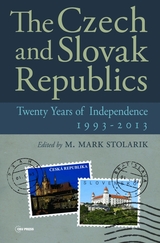 The Czech and Slovak Republics: Twenty years of Independence, 1993–2013
M. Mark Stolarik
Central European University Press, 2017 The essays in the book compare the Czech Republic and Slovakia since the breakup of Czechoslovakia in 1993. The papers deal with the causes of the divorce and discuss the political, economic and social developments in the new countries. This is the only English-language volume that presents the synoptic findings of leading Czech, Slovak, and North American scholars in the field.The authors include two former Prime Ministers of the Czech Republic and Slovakia, eight leading scholars (four Czechs and four Slovaks), and eight knowledgeable commentators from North America. The most significant new insight is that in spite of predictions by various pundits in the Western World that Czechia would flourish after the breakup and Slovakia would languish, the opposite has happened. While the Czech Republic did well in its early years, it is now languishing while Slovakia, which had a rough start, is now doing very well. Anyone interested in the history of the Czech and Slovak Republics over the last twenty years will find gratification in reading this book.
Czech Bluegrass: Notes from the Heart of Europe
Lee Bidgood
University of Illinois Press, 2017 Bluegrass has found an unlikely home, and avid following, in the Czech Republic. The music’s emergence in Central Europe places it within an increasingly global network of communities built around bluegrass activities.
Lee Bidgood offers a fascinating study of the Czech bluegrass phenomenon that merges intimate immersion in the music with on-the-ground fieldwork informed by his life as a working musician. Drawing on his own close personal and professional interactions, Bidgood charts how Czech bluegrass put down roots and looks at its performance as a uniquely Czech musical practice. He also reflects on “Americanist” musical projects and the ways Czech musicians use them to construct personal and social identities. Bidgood sees these acts of construction as a response to the Czech Republic’s postsocialist environment but also to US cultural prominence within our global mediascape.
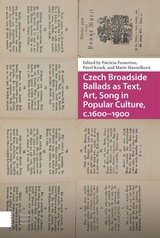 Czech Broadside Ballads as Text, Art, Song in Popular Culture, c.1600–1900
Patricia Fumerton
Amsterdam University Press, 2023 This landmark collection makes a major contribution to the burgeoning field of broadside ballad study by investigating the hitherto unexplored treasure-trove of over 100,000 Central/Eastern European broadside ballads of the Czech Republic, from the 16th to the 19th century. Viewing Czech broadside ballads from an interdisciplinary perspective, we see them as unique and regional cultural phenomena: from their production and collecting processes to their musicology, linguistics, preservation, and more. At the same time, as contributors note, when viewed within a larger perspective—extending one’s gaze to take in ballad production in bordering lands (such as Germany, Poland, and Slovakia) and as far Northwest as Britain to as far Southwest as Brazil—we discover an international phenomenon at work. Czech printed ballads, we see, participated in a thriving popular culture of broadside ballads that spoke through text, art, and song to varied interests of the masses, especially the poor, worldwide.
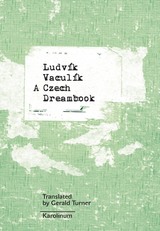 A Czech Dreambook
Ludvík Vaculík
Karolinum Press, 2018 It’s 1979 in Communist Czechoslovakia, ten years into the crushing period known as normalization, and Ludvík Vaculík has writer’s block. It has been nearly a decade since he wrote his powerful novel, The Guinea Pigs, and it was in 1968 that he wrote his anti-regime manifesto, Two Thousand Words, which the Soviet Union used as a pretext for invading Czechoslovakia. On the advice of his friend, the poet and surrealist painter Jiří Kolář, Vaculík begins to keep a diary, “a book about things, people, and events.” This marks the beginning of A Czech Dreambook.
Fifty-four weeks later, what Vaculík turns out to have written is a unique mixture of diary, dream journal, and outright fiction—an inverted roman à clef in which the author, his family, his mistresses, and the real leaders of the Czech underground play major roles. Undisputedly the most debated novel among the Prague dissident community of the 1980s, it is a work that Vaculík himself described as an amalgam of “hard-boiled documentary” and “magic fiction,” while Václav Havel called it “a truly profound and perceptive account. . . . A great novel about modern life and the crisis of contemporary humanity.”
A Czech Dreambook has been hailed as the most important work of Czech literature in the past forty years. And yet it has never before been available in English. Flawlessly translated by Gerald Turner, Vaculík’s masterpiece is a brilliant exercise in style, dry humor, and irony—an important portrait of the lives and longings of the dissidents and post-Communist elites.
Czech Law in Historical Contexts
Jan Kuklík
Karolinum Press, 2015 The legal system of the present-day Czech Republic cannot be understood without sufficient knowledge of its historical roots and evolution. Kuklík traces the development of Czech law from its origins as a form of Slavic law to its current position, reflecting the influence of both Roman law and the legal systems of neighboring countries. The twentieth century is of particular importance due to the establishment of an independent Czechoslovakia in 1918 and its split in 1993 into the Czech Republic and the Slovak Republic. It was a century encompassing periods of democratic as well as totalitarian regimes, and major political, ideological, economic, and social changes, making Czech Law in Historical Context an ideal case study for researchers interested in the transition of democratic legal systems into totalitarian regimes, and vice versa.
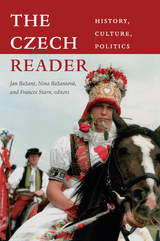 The Czech Reader: History, Culture, Politics
Jan Bazant, Nina Bazantová, and Frances Starn, eds.
Duke University Press, 2010 The Czech Reader brings together more than 150 primary texts and illustrations to convey the dramatic history of the Czechs, from the emergence of the Czech state in the tenth century, through the creation of Czechoslovakia in 1918 and the Czech Republic in 1993, into the twenty-first century. The Czechs have preserved their language, traditions, and customs, despite their incorporation into the Holy Roman Empire, the Habsburg Empire, the Austro-Hungarian Empire, the Third Reich, and the Eastern Bloc. Organized chronologically, the selections in The Czech Reader include the letter to the Czech people written by the religious reformer and national hero Jan Hus in 1415, and Charter 77, the fundamental document of an influential anticommunist initiative launched in 1977 in reaction to the arrest of the Plastic People of the Universe, an underground rock band. There is a speech given in 1941 by Reinhard Heydrich, a senior Nazi official and Deputy Reich Protector of Bohemia and Moravia, as well as one written by Václav Havel in 1984 for an occasion abroad, but read by the Czech-born British dramatist Tom Stoppard, since Havel, the dissident playwright and future national leader, was not allowed to leave Czechoslovakia. Among the songs, poems, folklore, fiction, plays, paintings, and photographs of monuments and architectural landmarks are “Let Us Rejoice,” the most famous chorus from Bedřich Smetana’s comic opera The Bartered Bride; a letter the composer Antonín Dvořák sent from New York, where he directed the National Conservatory of Music in the 1890s; a story by Franz Kafka; and an excerpt from Milan Kundera’s The Joke. Intended for travelers, students, and scholars alike, The Czech Reader is a rich introduction to the turbulent history and resilient culture of the Czech people.
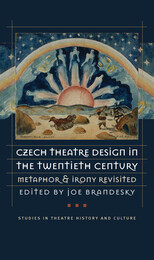 Czech Theatre Design in the Twentieth Century: Metaphor and Irony Revisited
Joe Brandesky
University of Iowa Press, 2007 This stimulating compilation of essays and images reveals an essential and valuable component of Czech contributions to the world of modern theatre heretofore largely unseen outside the country itself. Featuring the craft of twenty-seven of the best stage and costume designers of the twentieth century, Joe Brandesky supplies ample evidence of their consistently high quality and dynamic creativity, survival skills for a people whose national identity had been dismantled during many years of occupation and repression.
Essays by Vera Ptacková, Dennis Christilles, Delbert Unruh, and, Marie Zdenková their full texts restored and reedited for this volume since their initial publication in exhibit catalogs, provide historical and linguistic insights into contemporary Czech scenography as well as comparisons to the major art movements affecting the designers. Brandesky’s informative introductory essay contextualizes the shifting tenets of Czech theatre design. Also included are biographies of the designers, a bibliography, and thirty black-and-white photographs.
The accompanying CD provides access to the vibrant and sophisticated images of the Czech theatrical world: 138 richly colorful paintings and drawings of costumes, models, and set designs and in situ photos of exhibited designs plus 27 color and black-and-white photos of the designers. The CD also includes the full text of the book with links to all the art and to the designers’ biographies. Book and CD together showcase the Czech Republic as a center of international stage design.
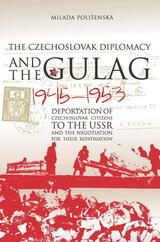 Czechoslovak Diplomacy and the Gulag: Deportation of Czechoslovak Citizens to the USSR and the Negotiation for their Repatriation, 1945-1953
Milada Polišenská
Central European University Press, 2016 After the entry of the Red Army into Czechoslovak territory in 1945, Red Army authorities began to arrest and deport Czechoslovak citizens to labor camps in the Soviet Union. The regions most affected were Eastern and South Slovakia and Prague. The Czechoslovak authorities repeatedly requested a halt to the deportations and that the deported Czechoslovaks be returned immediately. It took a long time before these protests generated any response. Czechoslovak Diplomacy and the Gulag focuses on the diplomatic and political aspects of the deportations. The author explains the steps taken by the Czechoslovak Government in the repatriation agenda from 1945 to 1953 and reconstructs the negotiations with the Soviets. The research tries to answer the question of why and how the Russians deported the civilian population from Czechoslovakia which was their allied country already during the war. Key words: 1. World War, 1939–1945—Deportations from Czechoslovakia. 2. Forced labor—Soviet Union—History. 3. Labor camps—Soviet Union—History. 4. Czechs—Soviet Union—History. 5. Slovaks—Soviet Union—History. 6. Czechoslovakia—Foreign relations—Soviet Union. 7. Soviet Union—Foreign relations—Czechoslovakia. 8. Czechoslovakia—Foreign relations—1945–1992. 9. Repatriation—Czechoslovakia—History.
 Czechoslovak Jewish Refugees in the Gulag: Soviet Labour and POW Camps during World War II as Recollected by Jewish Refugees from Czechoslovakia
Jan Dvorák and Adam Hradilek
Karolinum Press, 2025 Containing meticulous research of a long under-represented part of the Holocaust, this book provides a rich pictorial documentation of the Gulag environment as told by Jewish refugees.
While millions of Soviet slaves awaited liberation from the Nazi troops, millions of German concentration camp victims put their last bit of hope in the Red Army.
An in-depth look into the Soviet persecution of Jewish refugees, this book offers twenty-one different interviews with Czechoslovak Jewish refugees who found themselves in Soviet labor and prison camps between 1939 and 1941. They represent around two thousand Czechoslovak Jews who escaped persecution from German and Hungarian occupational forces and Slovak fascists by fleeing to the East. The Soviets sentenced most of them to long stints of forced labor in the Gulags for illegal immigration, espionage, and other arbitrary accusations. A specific group was formed by the Jews from the Hungarian labor service who either defected to or were captured by the Soviets.
Dvořák and Hradilek chronicle four waves of escape—those from the Protectorate of Bohemia and Moravia, the Nisko concentration camp, Carpathian Ruthenia, and the aforementioned labor service. Thorough and clear, every interview coincides with supplementary documents and photographs found in the NKVD archives, sourced from Ukraine.
 Czechoslovakia at the World’s Fairs: Behind the Façade
Marta Filipová
Central European University Press, 2024 Established in 1918, as a new state the First Czechoslovak Republic was keen to project a distinct image. Participation in World Fairs offered the perfect opportunity-. In this comprehensive account of Czechoslovak participation in international exhibitions of the interwar period Marta Filipová looks beyond the sleek façade of the modernist pavilions to examine the intersections of architecture, art and design with commercial interests, state agendas, individual action and the public, offering a complex insight into the production and reception of national displays. The rich collection of images – mainly photographs – provides a close look at the Czechoslovak pavilions. The design, content and context of the displays convey an idealized narrative that was created for the fairs and the myths on which the Czechoslovak nation and state were built. Heavy machinery, modern art, tourist destinations, and food and drink were presented as Czechoslovak, while many aspects of social life – particularly women or ethnic minorities – were strikingly underrepresented or absent. The book argues that the objects and ideas that the pavilion organizers put on display legitimized and validated the existence of the new state through the inclusion and exclusion of exhibits, people, and ideas. While Marta Filipová primarily focuses on Czechoslovakia, she also offers insights into how other emerging nations projected and sustained their image during this historical period and how interwar world’s fairs accommodated them.
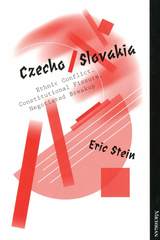 Czecho/Slovakia: Ethnic Conflict, Constitutional Fissure, Negotiated Breakup
Eric Stein
University of Michigan Press, 2000 As the clock struck midnight on December 31, 1992, Czechoslovakia, the only genuine democracy in post-World War I Central-Eastern Europe, broke up into two independent successor states. This book explores the failed search for a postcommunist constitution and it records in a lively style a singular instance of the peaceful settlement of an ethnic dispute.
For more than three years after the implosion of the Communist regime in 1989, the Czechs and Slovaks negotiated the terms of a new relationship to succeed the centralized federation created under communism. After failing to agree to the terms of a new union, the parties agreed on an orderly breakup.
In the background of the narrative loom general issues such as: What are the sources of ethnic conflict and what is the impact of nationalism? Why do ethnic groups choose secession and what makes for peaceful rather than violent separation? What factors influence the course of postcommunist constitutional negotiations, which are inevitably conducted in the context of institutional and societal transformation? The author explores these issues and the reasons for the breakup.
Eric Stein, a well-known scholar of comparative law and a native of Czechoslovakia, was invited by the Czechoslovak government to assist in the drafting of a new constitution. This book is based on his experiences during years of work on these negotiations as well as extensive interviews with political figures, journalists, and academics and extensive research in the primary documents. It will appeal to historians, lawyers, and social scientists interested in the process of transformation in Eastern Europe and the study of ethnic conflict, as well as the general reader interested in modern European history.
Eric Stein is Hessel E. Yntema Professor Emeritus, University of Michigan Law School. He previously served with the United States Department of State in the Legal Advisor's Office. He is the author of many books and articles on comparative law and the law of the European Community.
Czechs and Germans 1848-2004: The Sudeten Question and the Transformation of Central Europe
Václav Houzvicka
Karolinum Press, 2013 Václav Houžvicka describes the development of the Czech-German national controversies from the mid-nineteenth century, through the establishing of the Czechoslovak Republic in 1918, to the beginning of the twenty-first century. He focuses primarily on the tragic end of the nations’ coexistence in 1938–1945 and the differing Czech and German understandings of the reasons for the removal of Germans from the Czechoslovak Republic after 1945 in the latter part of the twentieth century. Houžvicka clarifies the relationships between Czech, German, and Sudeten-German identities within the international and social-economic context of the twentieth century.
|
|

